|
Dusty Dog Reviews The whole project is hip, anti-academic, the poetry of reluctant grown-ups, picking noses in church. An enjoyable romp! Though also serious. |

|
Nick DiSpoldo, Small Press Review (on Children, Churches and Daddies, April 1997) Children, Churches and Daddies is eclectic, alive and is as contemporary as tomorrow’s news. |
Volume 171, April 2007
The Unreligious, Non-Family-Oriented Literary and Art Magazine
Internet ISSN 1555-1555
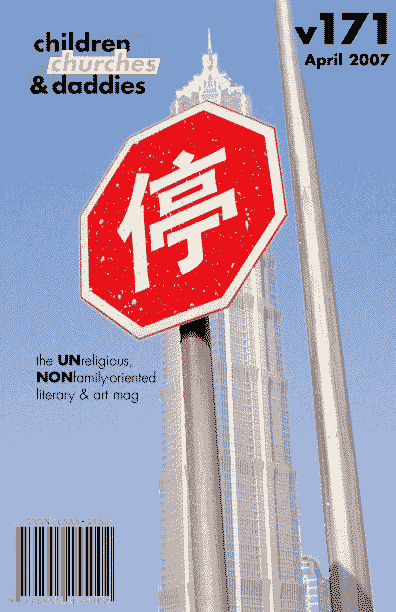


In This Issue...
The Boss Lady’s Editorial with “Choose Your Theory: Science or God”, then eye on the sky with NASA Images that Suggest Water Still Flows in Brief Spurts on Mars.
Art by Eric Bonholtzer, then
Poetry by Mel Waldman, art by Cheryl Townsend, poetry by Je’free, art by Edward Michael O’durr Supranowicz, and Adriana DeCastro, poetry by Ed Coet, art by David Matson, poetry by Jim Greenwald, art by Peter Schwartz, poetry by Christian Ward, and Ron Arnold, and Stanley M Noah, and Kelly Ann Malone, and Bill Dorris, and Luis Cuauhtemoc Berriozabal.
Prose by Brandon Kinkade, , art by Aaron WilderPat Dixon, and Kenneth DiMaggio.
(art is sprinkled throughout the issue...)



art by Eric Bonholtzer



the boss lady’s editorial

Choose Your Theory:
Science or God
Janet Kuypers, 11/28/06
I’m an addict to science shows and astronomy shows on the Science channel and the Discovery channel — so it makes sense that we had Scars Publications title the 2005 collection book “Chaos Theory:”
Chaos Theory: Also referred to as non-linear dynamics, chaos theory is a mathematical concept explaining that it is possible to get random results from normal equations — small occurrences can significantly affect the outcomes of seemingly unrelated events.
...and the 2005 collection audio CD “String Theory:”
String Theory: Physics. a mathematical entity used to represent elementary particles in terms of a small but finite string-like object existing in the four dimensions of space-time and in additional, hypothetical, space-like dimensions.
And the thing is, these are only theories. Are they something we’re supposed to believe as real? Well, maybe not — or at least, maybe not yet. The Big Bang has always been considered only a a theory, because knowing how the universe started is really only a theory, because no one was there to know how the universe started and we have no real evidence to help support the theory of the Big Bang. But discoveries (that even startled Einstein) that all matter was not sitting still in the Universe but moving away (albeit at different rates) from a central location, seems to support the theory that the universe had a starting point — like the point that started the Big Bang. And recently, scientists and astronomers have recently noted radiation emanating in all directions in outer space, and they believe these are very dim remnants of radiation are leftovers from the original Big Bang. Granted, they only believe this very dim remnants of radiation from the original Big Bang, but if this is more credible, then this means that scientists may have found evidence to support the Big Bang. As scientists reveal theories to explain key question in the history of the universe, they gain more and more knowledge to possibly help them discover what the truth may be.
I mentioned the Big Bang only as an example of how theories (like String Theory) might be valid, but we haven’t learned enough about them yet to be able to explain exactly why these theories are true.
Now, I’m not suggesting that String Theory has to be true, I’m just stating that this is a theory that scientists and astronomers are thinking about, and working on trying to validate with empirical data.
But even still... Do you want to believe that the theory of having strings ties everything in the universe together is actually valid? I mean, do you want to believe that we’re all somehow tied together, that we’re somehow all literally connected to other things in the universe? I mean, other than our own bodies, it’s hard to imagine that we’re actually literally “tied” to anything else.
And if you think that’s strange, I even heard that Steven Hawking talked about the possibility of black holes being doorways to other universes... and Richard Dawkins (an Oxford professor, Darwinist and atheist) has explained the the theory of the “multiverse.”
What on earth is a multiverse? Well, we’re in a universe. But the theory is that there may be more than one universe, and having more than one universe makes the whole prefix of “uni” seem pointless (you know, if there are a multiple number of universes... because then the way to think of everything would be to think of multiverses). That theory says that, according to Dawkins (in an article In Time, 11/12/06), “maybe the universe we are in is one of a very large number of universes. The vast majority will not contain life... But as the number of universes climbs, the odds mount” that one universe — ours — would contain life.
Now, that’s a fascinating theory, And who the Hell knows, it might be valid. But without any empirical data to support this theory, is anyone going to believe that it is true?
I ask you this question not to convince you of astronomical and scientific theories related to physics, but to pose the stretch that some theories may have until we know better or have any evidence to support them.
This is the same way with religion. People who don’t have explanations for some otherwise currently unexplainable events to people, often rely on God, a supernatural creation that defies explanation in any human form to explain away what we see as “miracles.”
Granted, in ancient times, people relied on the Sun God, the Rain God, the Wind God, so they could pray to the right Gods to help their weather so their crops would grow the next season. And as we’ve learned and understood how things work in nature, we have dismissed these Gods. The current Gods that people on this planet support may be the same thing — people looking to rely on a mythical supernatural being to explain what they see as unexplainable.
But the again, that’s just a theory.
Just like the idea of God may be a theory, because there is never any scientific evidence to support a God — yes, you have to rely on “faith,” and not evidence. Religious people will say they believe in something, but they’re unwilling to call it a theory (even though there is no evidence to prove their God to the world).
•••
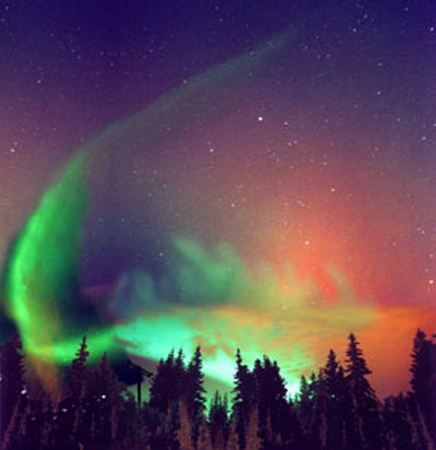 Sorry about my digression... getting back to my discussion of scientific theories... I was thinking about science, and how there is often a rift between the strict science community and the more religious-inclined, because there is no proof in God, and even relying on a God for an explanation of what we can’t understand flies in the face of using science and logic and reason to understand the world. In fact, I was reading a debate between Richard Dawkins and Francis Collins (a genome pioneer and supporter of God), where each person relied on theory to support their arguments. And actually, Collins heard Dawkins’ multiverse theory (you know, having many universes, and we’re just in one), and thought the idea of believing in a God was less of a leap of faith. So it made me start to wonder: which theories do people choose to believe in to live their lives on? Because before enough research is done, more scientific facts start off as theories, and we have to make a “leap of faith” to support any topic before it can ever be supported and proven.
Sorry about my digression... getting back to my discussion of scientific theories... I was thinking about science, and how there is often a rift between the strict science community and the more religious-inclined, because there is no proof in God, and even relying on a God for an explanation of what we can’t understand flies in the face of using science and logic and reason to understand the world. In fact, I was reading a debate between Richard Dawkins and Francis Collins (a genome pioneer and supporter of God), where each person relied on theory to support their arguments. And actually, Collins heard Dawkins’ multiverse theory (you know, having many universes, and we’re just in one), and thought the idea of believing in a God was less of a leap of faith. So it made me start to wonder: which theories do people choose to believe in to live their lives on? Because before enough research is done, more scientific facts start off as theories, and we have to make a “leap of faith” to support any topic before it can ever be supported and proven.
Granted, the “theory” is that you can never truly prove or support God or religion, but oftentimes you can’t prove a scientific theory instantly. Some scientific theories have been disproved when studied further, and some theories are so hypothetical that we probably have no real way to prove them (like postulating how earth got it’s moon: there’s a theory that a another large planet-like object was circulating the sun in the beginnings of our solar system days — which theorists have even named Orpheus — that actually collided with “earth version one,” destroying Orpheus and knocking enough debris from the two planets into a loose orbit which eventually congealed, forming our moon as we know it). But some “theories” gain more and more evidence that people tend to believe these theories to be true (like the Big Bang... we have no records of what happened back when, but scientists are finding radiation emanating still from the initial theoretical Big Bang, which leads more credibility to the theory).
•••
 The main issues between these two scientific icons (one atheist for Darwin, Richard Dawkins, and one genome pioneer Christian who converted from Atheism when he was 27, Francis Collins) sprung up in their Time magazine debate when Dr. Collins mentioned that evolution could exist, and God could have set the entire universe in motion. Dawkins thought that was a bit of a stretch, and believing in a God was a cop-out for any scientist.
The main issues between these two scientific icons (one atheist for Darwin, Richard Dawkins, and one genome pioneer Christian who converted from Atheism when he was 27, Francis Collins) sprung up in their Time magazine debate when Dr. Collins mentioned that evolution could exist, and God could have set the entire universe in motion. Dawkins thought that was a bit of a stretch, and believing in a God was a cop-out for any scientist.
Dawkins then postulated the multiverse theory, which made Collins say that believing in a God was less of a leap of faith than believing in the multiverse theory.
Collins eventually said he agrees with practically all of Dawkin’s conclusions about the natural world, but he is also able to “embrace the possibility that there are answers that science isn’t able to provide about the natural world.” Which is where he delves into the concept of a God. Dawkins said he’s open to ideas that as of yet no human can understand, but he doesn’t want to believe that for anything unanswerable, the answer lies in relying on the created concept of a God.
And if Dawkins believes that there are things in the universe that we as human are yet capable of understanding (I mean, thinking of multiple universes, or everything tied to something else with a microscopic string, those seems like a bit of a stretch for the average person’s imagination...), he also states that “if there is a God, it’s going to be a whole lot bigger and a whole lot more incomprehensible that anything that the theologians of any religion has ever proposed” — meaning that if the concept of God is real, it’s probably in form so amazing that our little human minds have yet to imagine in the first place.
•••
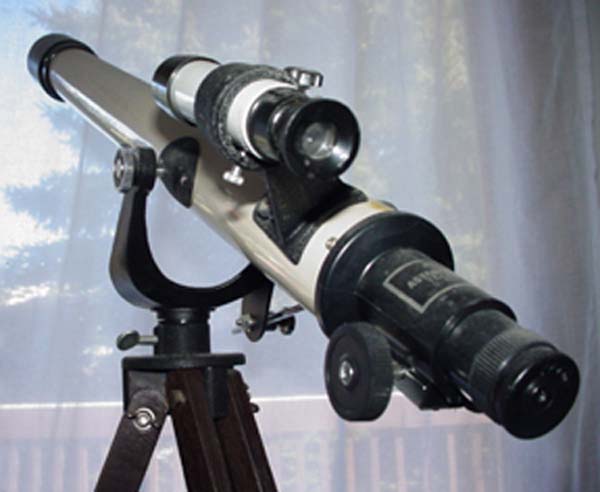 I’m going to reference an episode of South Park I recently saw to get to the point of what we as humans need to learn. So in this one episode of South Park, Richard Dawkins was sent to replace Mrs. Garrison (the gay balding man who had a sex change operation to be a woman) and teach evolution to the South Park Elementary fourth grade classroom. The cartoon character of Mr. Dawkins actually asked Mrs. Garrison out of a date (he apparently couldn’t tell Mrs. Garrison was a balding post sex-change transvestite). On a date, Mrs. Garrison said to Mr. Dawkins, “You can’t disprove God.” And Mr. Dawkins said then that you can’t disprove things like... like a “flying spaghetti monster” (yes, the cartoon character Mr. Dawkins on South Park came up with a “flying spaghetti monster”). Now, we discussed this idea while driving across the country, and my husband started saying, “well, if I was having spaghetti for dinner and dropped a piece of spaghetti...”, where I finished by saying “that the spaghetti and pasta on it when falling may destroy items we can’t see on a molecular level.” And that’s when my husband finished by saying, “and those things might consider what I dropped a flying spaghetti monster.”
I’m going to reference an episode of South Park I recently saw to get to the point of what we as humans need to learn. So in this one episode of South Park, Richard Dawkins was sent to replace Mrs. Garrison (the gay balding man who had a sex change operation to be a woman) and teach evolution to the South Park Elementary fourth grade classroom. The cartoon character of Mr. Dawkins actually asked Mrs. Garrison out of a date (he apparently couldn’t tell Mrs. Garrison was a balding post sex-change transvestite). On a date, Mrs. Garrison said to Mr. Dawkins, “You can’t disprove God.” And Mr. Dawkins said then that you can’t disprove things like... like a “flying spaghetti monster” (yes, the cartoon character Mr. Dawkins on South Park came up with a “flying spaghetti monster”). Now, we discussed this idea while driving across the country, and my husband started saying, “well, if I was having spaghetti for dinner and dropped a piece of spaghetti...”, where I finished by saying “that the spaghetti and pasta on it when falling may destroy items we can’t see on a molecular level.” And that’s when my husband finished by saying, “and those things might consider what I dropped a flying spaghetti monster.”
I can’t believe that this South Park joke about “flying spaghetti monsters” made us come to these scientific understandings, but from out little discussion, I flashed to the fact that the comet Shoemaker-Levy 9 was split into fragments and sucked into Jupiter’s orbit before colliding into Jupiter in 1994, and although some telescopes couldn’t capture the collision, research telescopes in Australia were able to record the collision — not in our normal light capabilities but through a different form of radiation. What they found doesn’t show pretty moving pictures of the collision that the average person could watch and understand, but they were able to retrieve a ton of data about the gases and temperatures in the collisions that we would otherwise never be able to detect. And making our little joke story about the feasibility of a flying spaghetti monster made me suddenly realize that there is a lot about our own universe that we have no instantaneous complete grasp over.
Not that this makes me believe in the multiverse theory, but it makes me realize that there’s a lot about our own universe that I’ll never completely understand.
And not that this was the only thing that made me think of not being able to understand everything about the universe... because as we talked about the effect of the flying spaghetti monsters, I brought up dark matter. I think it takes up like ninety percent of the universe as we know it, and we know it contains something — it’s not nothing, but the only way we know that it’s not nothing is because we’ve seen residual traces of microscopic objects after they have moved through dark matter. Now, scientists have been trying to figure out anything about dark matter, but the understanding seems insanely elusive, because we’ve either used the wrong methods to study it or we possibly don’t have the right tools to witness it and study it now. Which makes this another thing about the universe — and this is about ninety percent of the universe — that we need to learn and understand.
•••
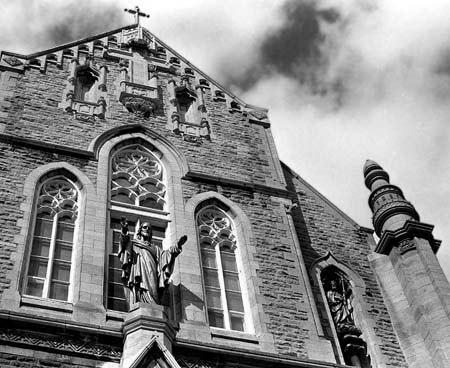 So who knows, maybe there is a God that we don’t understand. Maybe there are multiple universes, and life is just in one of them. Who knows, maybe there are multiple universes and God started life in this one. And maybe small events can effect the world in unexpected ways, and maybe there are microscopic “strings” that tie everything together in the universe somehow. And you know what? There are a ton of things about dark matter (about ninety percent of the universe) that we currently have no concept of, and there are parts of the universe that our five senses can’t comprehend (like how we can learn more when studying different levels of radiation from events to learn more about them in the universe), so yeah, there are always things we can learn. There could be things about the concept of a God that we can learn from (though we won’t have evidence of this God, you’ll have to abandon proof to support it), and there are a ton of things about our universe we have yet to learn (if we’ll ever have the tools to learn these things... but we’ll keep trying).
So who knows, maybe there is a God that we don’t understand. Maybe there are multiple universes, and life is just in one of them. Who knows, maybe there are multiple universes and God started life in this one. And maybe small events can effect the world in unexpected ways, and maybe there are microscopic “strings” that tie everything together in the universe somehow. And you know what? There are a ton of things about dark matter (about ninety percent of the universe) that we currently have no concept of, and there are parts of the universe that our five senses can’t comprehend (like how we can learn more when studying different levels of radiation from events to learn more about them in the universe), so yeah, there are always things we can learn. There could be things about the concept of a God that we can learn from (though we won’t have evidence of this God, you’ll have to abandon proof to support it), and there are a ton of things about our universe we have yet to learn (if we’ll ever have the tools to learn these things... but we’ll keep trying).


This editorial is licensed under a Creative Commons Attribution-NoDerivs 2.5 License.
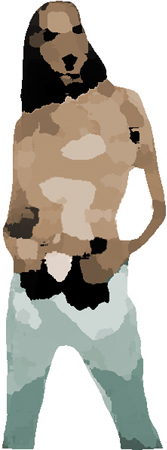


Janet Kuypers
Editor In Chief



eye on the sky


12.06.06
NASA Images Suggest Water Still Flows in Brief Spurts on Mars
NASA photographs have revealed bright new deposits seen in two gullies on Mars that suggest water carried sediment through them sometime during the past seven years.
“These observations give the strongest evidence to date that water still flows occasionally on the surface of Mars,” said Michael Meyer, lead scientist for NASA’s Mars Exploration Program, Washington.
Liquid water, as opposed to the water ice and water vapor known to exist at Mars, is considered necessary for life. The new findings heighten intrigue about the potential for microbial life on Mars. The Mars Orbiter Camera on NASA’s Mars Global Surveyor provided the new evidence of the deposits in images taken in 2004 and 2005.
“The shapes of these deposits are what you would expect to see if the material were carried by flowing water,” said Michael Malin of Malin Space Science Systems, San Diego. “They have finger-like branches at the downhill end and easily diverted around small obstacles.” Malin is principal investigator for the camera and lead author of a report about the findings published in the journal Science.
The atmosphere of Mars is so thin and the temperature so cold that liquid water cannot persist at the surface. It would rapidly evaporate or freeze. Researchers propose that water could remain liquid long enough, after breaking out from an underground source, to carry debris downslope before totally freezing. The two fresh deposits are each several hundred meters or yards long.
The light tone of the deposits could be from surface frost continuously replenished by ice within the body of the deposit. Another possibility is a salty crust, which would be a sign of water’s effects in concentrating the salts. If the deposits had resulted from dry dust slipping down the slope, they would likely be dark, based on the dark tones of dust freshly disturbed by rover tracks, dust devils and fresh craters on Mars.
Mars Global Surveyor has discovered tens of thousands of gullies on slopes inside craters and other depressions on Mars. Most gullies are at latitudes of 30 degrees or higher. Malin and his team first reported the discovery of the gullies in 2000. To look for changes that might indicate present-day flow of water, his camera team repeatedly imaged hundreds of the sites. One pair of images showed a gully that appeared after mid-2002. That site was on a sand dune, and the gully-cutting process was interpreted as a dry flow of sand.
Today’s announcement is the first to reveal newly deposited material apparently carried by fluids after earlier imaging of the same gullies. The two sites are inside craters in the Terra Sirenum and the Centauri Montes regions of southern Mars.
“These fresh deposits suggest that at some places and times on present-day Mars, liquid water is emerging from beneath the ground and briefly flowing down the slopes. This possibility raises questions about how the water would stay melted below ground, how widespread it might be, and whether there’s a below-ground wet habitat conducive to life. Future missions may provide the answers,” said Malin.
Besides looking for changes in gullies, the orbiter’s camera team assessed the rate at which new impact craters appear. The camera photographed approximately 98 percent of Mars in 1999 and approximately 30 percent of the planet was photographed again in 2006. The newer images show 20 fresh impact craters, ranging in diameter from 7 feet (2 meters) to 486 feet (148 meters) that were not present approximately seven years earlier. These results have important implications for determining the ages of features on the surface of Mars. These results also approximately match predictions and imply that Martian terrain with few craters is truly young.
Mars Global Surveyor began orbiting Mars in 1997. The spacecraft is responsible for many important discoveries. NASA has not heard from the spacecraft since early November. Attempts to contact it continue. Its unprecedented longevity has allowed monitoring Mars for over several years past its projected lifetime.
NASA’s Jet Propulsion Laboratory, Pasadena, manages the Mars Global Surveyor mission for the NASA Science Mission Directorate, Washington. For more information, visit http://www.nasa.gov.



poetry
the passionate stuff



SCALES
Mel Waldman
How do I balance Father’s madness with Mother’s love?
Acts of terrorism begin behind closed doors at home.
The first terrorist I knew was Father. I knew him intimately.
Cannibal that he was, he ate my soul for dinner each night.
Mother sat quietly and looked away in denial or fear.
How do I balance Father’s madness with Mother’s flawed love?
What are the rights of a terrorist? (How do I atone for the sins of
my father?) What are the rights of a terrorist suspect? (How do I
escape Father’s web of evil?) What am I if I terrorize the terrorist
or the terrorist suspect? Shall I become the object of my venom?
Father bestowed upon me his dark raw rage, passing it through my
fragile being in a ferocious emotional contagion and it metastasized
into a million wild fragments, unforgivingly, feverishly, in a wilderness
where evil was born-in my Garden of Eden.
Mother, always the optimist, fed me love and faith and visions of a
beautiful future, never seeing the slithering snake nearby. But Father
reminded me I was his dark son and he force-fed me his rage. Made me
swallow it. And I believe that Father’s most heinous act-his rape of my
soul-removed my skin of innocence and the last vestige of hope and redemption.
The universe spits rage at us and tips the scale of love and hate. How do we
balance it?
The galaxy launches good and evil at us, filling our human bodies with
the forces of light and darkness.
The cosmos rushes forth with nature’s truth. But humans run with
truth and lies, often addicted to self-deception, afraid to balance
the Scale of Truth.
So many scales to balance...
Our president wants to strip terrorist suspects of habeas corpus,
cutting off their umbilical cord to humanity. And he craves
new powers to delineate the parameters of interrogation
of these individuals, who are still, in fact, innocent
until proven guilty, according to our Constitution,
and human beings too-not animals-nor terrorists
nor mass murderers nor war criminals.
How do we balance the Scale of Justice?
Shall we forget the Detainee Treatment
Act and the Geneva Conventions?
(Father used to torture me every
day with little restraint and not
even Mother could stop him
from severing my soul and
mind.)
Shall we permit cruel and inhuman
treatment of terrorism detainees?
(When I was a young Brooklyn
boy, parents had the right to
physically abuse their
children in the name
of character
development.)
Shall we violate the Geneva Conventions
and torture our prisoners in secret camps
where human rights do not exist?
(When I grew up in Brooklyn,
children had no rights, it
seemed.)
If we do not bar cruel and inhuman treatment...
If we torture our prisoners, what will happen
to our POWs? What will the Enemy do?
How do we balance the Scales of Justice
and Morality?
The landscape of our beautiful country is
contaminated with human debris and
paranoia.
In the beginning, Father accused me of minor
crimes. Later on, his accusations spread like
a malignant tumor. He falsely claimed I
was guilty of more serious criminal acts
and finally-unspeakable crimes I never
committed.
I shook in his presence. I wanted to kill him for
raping my soul. With truth and sincerity, I told
him I was innocent.
“Confess! Confess!” he screamed at me. “I
know you did it!”
I never confessed. And the torture never ceased.
Even after Father’s death, I’m still in prison
(a lonely interior landscape apparently
painted by Bosch and Munch), an
innocent man guilty of feeling
terror, and nothing more.
Now, I sit in my cell and study the darkness.
So many scales to balance...within and out
there- where human minds and flesh are
tortured and human souls die every
moment from injustice,
vanishing into
oblivion,
as if
they
never
were.



Tits and Grass, art by Cheryl Townsend


Random Observations
After Your Funeral
Je’free
The sun has set on Sunset Blvd.
coloring the Pacific deep denim
Waves have wiped out
my calligraphy on sand
Pure silence is now married
to the motionless life of nature
The noisy crowd has hushed
like a subsided eye of a hurricane
Paths in the grass have hushed too
from squeaks of wagons
The heart-shaped pebble I tossed away
is still nestled in curls of dead leaves
The atmosphere is still
the Earth’s cocoon
My day, sex weather day for lovers,
endured without punctuation
Medicine cabinets are now as hollow
as a magician’s hat
Your absence has grown tall
in the corridor
Grin, lost somewhere in the folds
of my face, remains
My Adam’s apple is still hung
like a yoyo, still speechless
The frail blue branches of my veins
still carry a part of you
My lion heart, carried by a basket of ribs,
still roars like subway train
Dreams crashed into splinters
inside the mind’s confusion,
causing an aneurysmish rage
Pain is still covered
with veils of sheer deceit
You still make me want to be
the nipple of Everest
screaming your name



Deceit, art by Edward Michael O’durr Supranowicz


PRIME NUMBERS,
Richard Fein
they tease the obsessive in our natures.
A forever census is taken:
2, 3, 5, 7, 11, 13, and on and on through the centuries
beyond the sum of grains of sand or number of stars.
On parchment, rag paper, cheap printout, or screen pixels,
inventories are taken.
We are old when our years pass only two dozen of them.
But we’re positively compelled to find all these integers.
Is it their defiant indivisibility that taunts?
They’re divided only by themselves
and ONE, that ultimate unity.
They’re mileposts between here and infinity,
with always one more just ahead.
But how far ahead?
The answer is a tedious enumeration,
a measureless, marathon of measurement.
We defined the system, and the system torments us,
an open-ended, run-on numerical syntax
ever more countless than counted


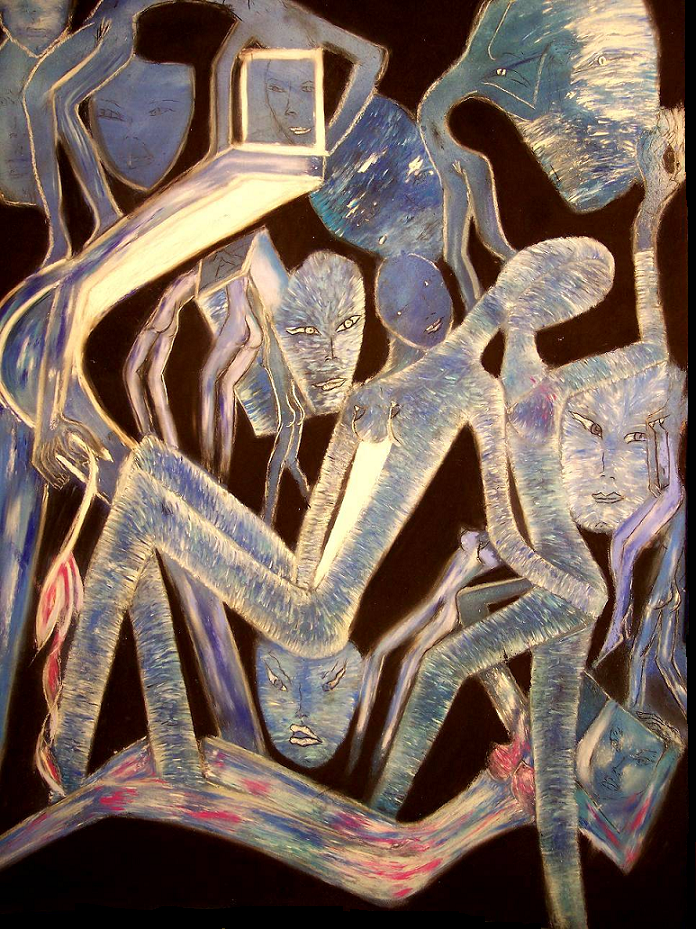
Paradise, art by Adriana DeCastro


COMFORT
Ed Coet
When I first met you I couldn’t leave you,
not even in my thoughts.
Nothing has changed. You are still there.
Without you I was nothing.
With you, everything.
You made me.
If I wakened in the night, regardless of reason,
I reached for you. Like a child in need of nurturing,
the sight of you gave me comfort.
I recall combat in the sands of Desert Storm.
There you were, in my heart and mind.
Still, you gave me comfort.
I see you in our children.
How they look and act. How they live their lives.
They are one with you as you are one with me.
We grew old together.
That was a blessing. Life was wonderful,
but only because I had you.
In the hospital when I was gravelly ill -
there you were, by my bedside.
You were the cure that I needed.
God made me say good-bye.
It hurts. I still cry.
Yet, even in death you give me comfort.


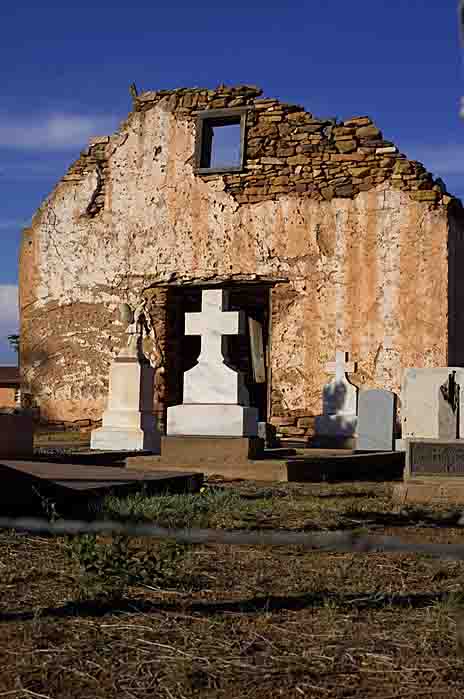
From Nature Images, art by David Matson


Memories of a Catholic school education,
the Gestapo of that religion ‘Dominican Nuns’
taught well, but oh so deadly.
penguins
jim greenwald
I remember my
childhood education.
Dressed in formal wear,
they looked like penguins.
Wielders of yardsticks and rulers
made of near unbreakable wood.
Attention getters—embedded
splinters and bloody knuckles.
The nuns entrusted with my early
education.
Baseballs loss—none could throw
a strike like the penguin with
her chalk.
Education by pain—we did learn.
We had to.
No place to hide from their rage.
They stand beside you in the
boy’s room—privacy—there was
none, to nuns on a mission.
Boot camp was a breeze—being
shot at—a break, they did not throw
bullets like the penguins with
their chalk.


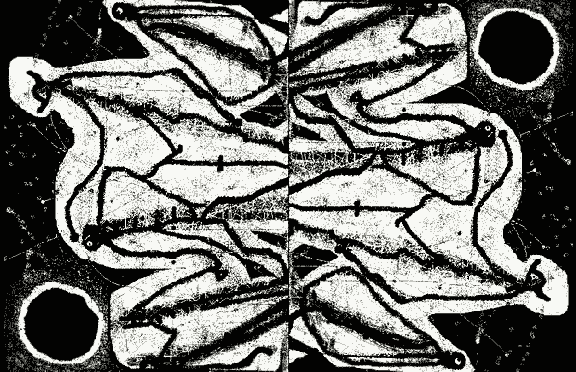
Organics, art by Peter Schwartz

Information on the Artist Peter Schwartz
After years of writing and painting, Peter Schwartz has moved to another medium: photography. In the past his work’s been featured in many prestigious print and online journals including: Existere, Failbetter, Hobart, International Poetry Review, Red Wheelbarrow, Reed, and Willard & Maple. Doing interviews, collaborating with other artists, and pushing the borders of creativity, his mission is to broaden the ways the world sees art. Visit his online gallery at: www.sitrahahra.com.


Red Angels
Christian Ward
She was the first person on our street
who thought the government
was talking to her through the radio,
so she smashed it and displayed
its remains as a warning to any spies
lurking outside.
Nobody complained.
She was the first person on our street
who stopped taking her medicine,
thinking it made her a government
controlled zombie. So she ground it up
and used it as war paint, smearing
anarchist symbols on her front door.
Nobody complained.
She was the first person on our street
who sued the local newspaper
for printing lies perpetrated by MI5,
the local magistrate smiled sheepishly
and offered her a lollipop. She made
a crow out of the summons and set it alight.
Nobody complained.
She was the first person on our street
to think terrorists were living in her
basement, government hired agents
to spy on her and her three cats.
She set it on fire and watched red angels
take her away.
Somebody had complained.


The Tipping Point
Ron Arnold
I tape a Wildflowers poster on the wall
and ask my 2nd grade class to fill it in.
The girls’ ponytails sway as the scribble
with crayons and the boys attack the paper
like werewolves possessed by the full moon.
When they step back from their creation,
I am shocked. While most wildflowers
are white or in the blue-purple color spectrum
with petals that appear cool to touch,
the scrawled with golds, pinks, saffrons,
crimsons and scarlets until arm-weary.
And while most caterpillars and grasshoppers
blend in with the plants they inhabit,
my kids multi-colored each one.
Perhaps we could expect this after reaching
the tipping point. After global warming
has melted the ice caps and raised
the earth’s temperature by 3 or 4 degrees
and hurricanes have swamped our costal cities.
After the streams and rivers dry up
and drought threatens every farmer’s field.
All the wildflowers would morph into exotics
and the insects would become radiant rainbows.
I look at the Wildflowers poster again
with its clusters of bizarre colors and wonder:
How can we get it right
when all our politicians in Congress
and the White House have it wrong?


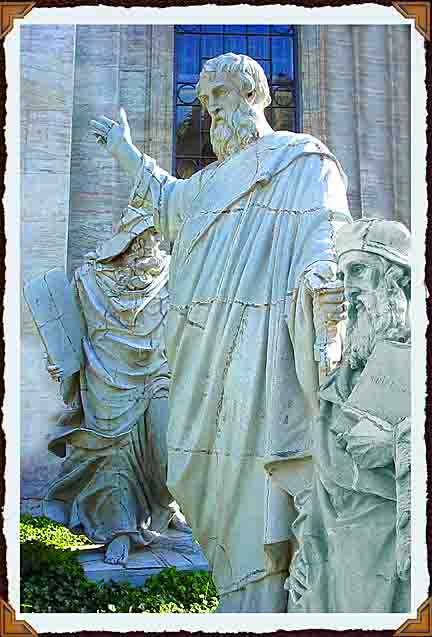
just another myth
Stanley M Noah
all greeks are not
philosophers & teachers
as it only seems
that way--
in fact
most are sailors
on ancient sails
traveling westward
on the
mediterranean express
unloading
gallons of olive oil,
unloading
clay pots of tragic stories
about fallen
warriors, kings and queens


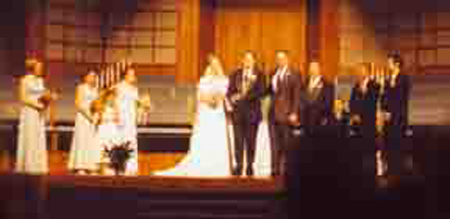
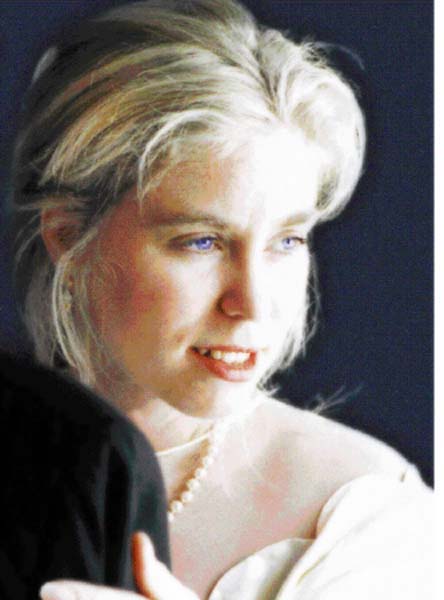
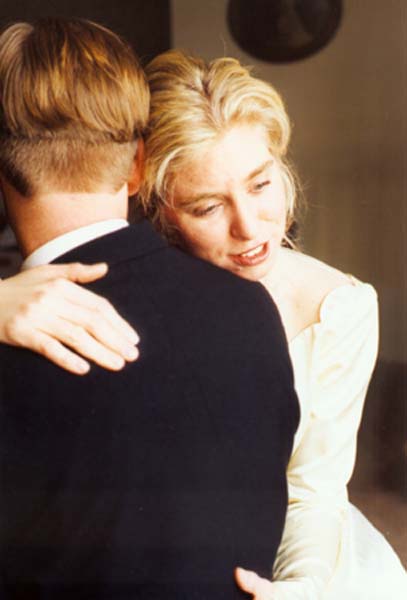
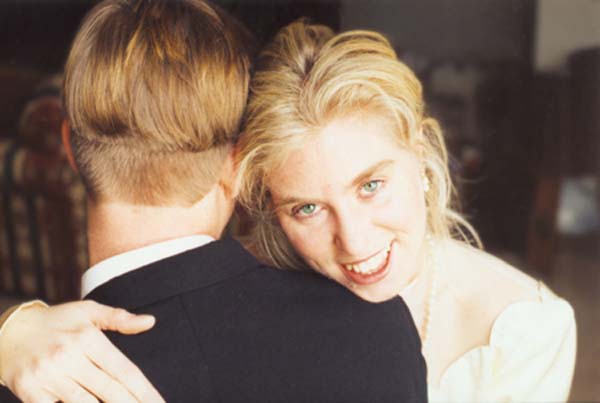
The Bridal Shower
Kelly Ann Malone
As I wrote the name of the gift-giver on the back of a paper plate
I couldn’t help but think what a silly mistake
No amount of tulle or pink lipstick can make this work
Desire is an attractive but misleading motivation
The bride-to-be is savoring her interim glory
At her peak and never thinner, with an impressive tan
Envious ladies offer gifts and praise
A white confection with blush roses graces the table
Undignified games produced intelligible banter
How many items on the tray? Don’t cross your legs!
Cold-cuts and veggie platters along with a spinach dip
The round thin mints in pastel colors tease the weight conscious guests
“John and Jill forever” printed out on delicate white napkins
She assumes if it’s in writing, it will.
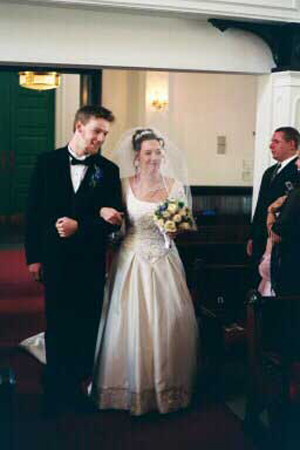
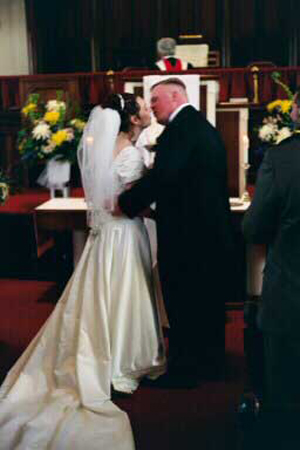
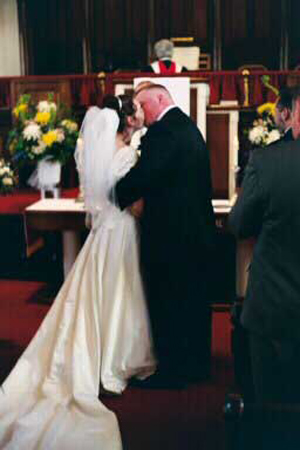
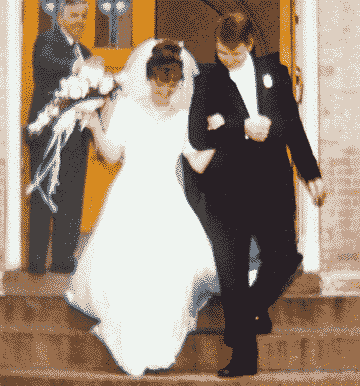


Kilimanjaro
Bill Dorris
While eagles track the rising waves
and towns are laid in shallow graves
snow geese fly magnetic skies
north to arctic Kansas
While great minds search
in lost directions
the army
that final engineering profession
drills flagpoles
down
the last snows of
oil
and uptown
as King Kong swings round
the last skyline
finally
One line in above poem
was triggered by reading
“The military is an engineering profession”
in Robert Haas’ “Bush’s War”
in March/April 2006 issue of APR.
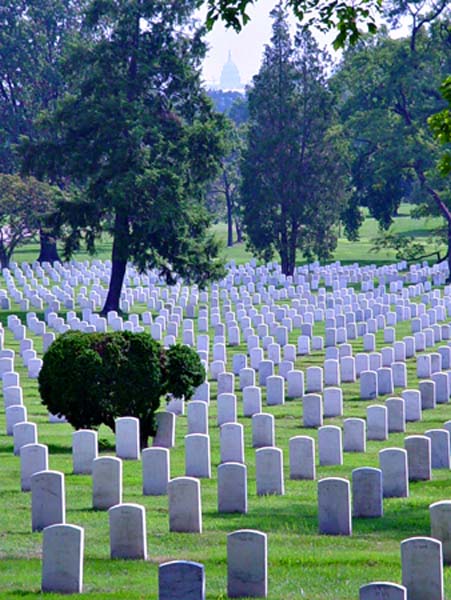


BURY ME
Luis Cuauhtemoc Berriozabal
Broadcast my name
And bury me.
I’m meaningless.
I will bring you
The shovel and
All of the dirt.
It is rather
Silly, but I
Cannot think of
A better thing.
Broadcast my name
And bury me.
Make the world know
I’m meaningless
Because I am.
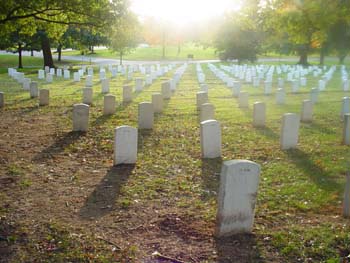



prose
the meat and poatoes stuff



Anthology
Brandon Kinkade
I wish I was a roadie for Jim Morrison and The Doors, taught to bear a whale in my stomach, become a irresponsible drunken clown through late night drowns of Beam, candy amphetamines, and cologne soaked hash smoke. Become his cinematic Warhol porno star, poking holes through the ends of Styrofoam cups staring at the fat bottom girls as they cross. Instead, I’m silently stuck to act my dreams through masturbation in the comfort of my box.
The world I spin in is a pen striped, grease stained homeless man’s box. I’m a fishing tank who waits patiently in Crown Hill cemetery for the ghosts to cross the lavender, echoing graves into the uncharted industrial smoke. Open your eyes and receive the think piece monologue entitled “The End.” As the temporary Florida migration of fossils leave through the back door, I sit open handed in the shallow side of the bar sipping the role as the sad clown.
It’s hard to court foreign models when you make a living as a rodeo clown. This is the last chapter of the book, “Twain’s anti-climatic let down in the end.” I rose up one morning to find two pigs with badges pushing orchestral tunes of the doorbell. The paper said they found weird Henry, head blowned, under the bridge in his boxers.
His left hand curled a domestic, empty filled hard pack of Lucky Stripe smokes, while his thin railed neck bore the burden of carrying Jesus’ Catholic cross.
As a child, we fantasied of Hollywood war and chased each other courageously across the neighborhood’s open Midwestern yards and through the high saluting garage doors. As a teen, I became a crazy glue wall lizard. An unholy son whose only hobby was smoking. As an adult, I poured tears like a faucet when they buried The King in his southern eternal box. Few years later, the myth whom said “We’re larger than Jesus.” fell upon his crucified clown only to leave me alone and uncharted with an L.A. woman to tie up the tangled blue loose ends.
A domino effect. We all tumble like lumber trees end over end chocking for sanctuary and breath over the dark cloud of Valhalla’s smoke. I wish I was a make believe friend who lived a luxurious life inside your Nike shoebox. Then you can pour me your secrets, tell me stories, and spend everlasting time clowning around like two children book lovers who met at chance when their paths finally crossed.
In your dreams, you will no longer hear the haunting slam of the old oak cellar door.
What if George Bush was a tacky salesman who sold soap on a rope door to door? Then would you still pick up a machine gun and run to Iraq with the dancing clowns? Did I ever mention to you about the man who once tried to cross The Ohio River? His legs tired out and the catfish bed became his end. As I sleep restlessly inside my yellow heart shaped box, I feel the warm of the virgin Mary caressing me through the devil’s thick smoke.
In my box, I play the avent garde actor opposite the sad clown.
In the end, I sit still and pray to find truth amongst the Catholic cross. Hopefully, the doors to our lives will be revealed through the thick smoke.



No One Sees, No One Knows art by Aaron Wilder


Out to Lunch
Pat Dixon
How the hell can they enforce that? wondered Dr. William (“Hopalong”) Boyd, as he washed his hands and read the large-print sign glued to the mirror in front of him. He smiled to himself and glanced theatrically around the upper walls of the large men’s room to see if it had any surveillance camera. Nope. If the employees don’t WISH to wash their hands after every time they have a whiz—or any time, for that matter—nobody will know—or nobody but the individual employee involved—unless the ladies’ room is different, which is very probable—or unless there’s a surveillance camera hidden in back of this mirror.
Dr. Boyd faced the mirror, scrutinized it with a slight frown, smiled toothily at the center of it, and blew a kiss to whatever camera might lie behind it.
He pushed the handle of a towel dispenser several times and tore off two brown paper towels.
“Ha—I like not that,” he said under his breath as he dried his hands. The handle of the towel dispenser was grimy looking. Then, as he reached for the handle on the lavatory door, he noticed more visible grime around it. Years of neglect, he thought. But even if they scoured and disinfected the handles every day, there’d be millions of unseen things on ‘em—and as the Little Prince rightly put it, ‘The really important things are invisible to the eye.’ Bet no restaurant cares to think about THAT. Well, once more into the breach.
His mother was sitting fifteen feet from the entry, looking absently at the sixty-eight lobsters crawling around the bottom of a large tank.
“I can see there’s an empty table in there, Billy,” she said. “Tell that colored girl that we’d like to be seated sometime today. Tell her that table would do just fine.”
“That’s in the smoking section, Mom. We asked for non-smoking. It’ll only be a few more minutes. Is there any chance you’ll need to use the little girls’ room while we’re here? If so, this w—”
“I went before we left the apartment, Billy. I can hold my water till we get back. I can see another table is clear in the other section there. Just tell that girl you want that one.”
“Mom, they gave me this electronic thing to page us when it’s our turn. Maybe that table is for somebody else who’s in the ladies’ room or men’s room or having a smoke outside. Maybe they’re being paged right now to come get their table.”
“Well, if they’re not here, then they gave up their turn. That’s my view, Billy. And when did you get that thing anyways? I never saw them hand it to you.”
“It was when the woman asked my name, and I told her ‘Boyd,’ and she wrote it down and handed this to me.”
“Well, I never saw any of that happening. Are you sure it’s working?”
As if on cue, the palm-sized black plastic octagon suddenly began to flash sixteen bright red lights and emit a series of soft ringing sounds.
“I’m Teesha,” said a contralto voice behind Dr. Boyd. “I’ll be your waitress, if you’ll just follow me, please.”
Mrs. Boyd raised her eyebrows and pursed her lips.
“Billy, grab hold of my walker while I get myself up from this bench—please.”
After they were seated at a small table meant for four and her walker had been stowed against the wall, Mrs. Boyd began paging through the menu.
“Well, I know what I want—if I can just find it. They’ve gone and changed the menu all around again on me. What are you going to have, Billy?”
Dr. Boyd pointed to his mouth, indicating he would answer her question after swallowing the piece of cheese bread he was chewing. They always give five pieces to a table no matter how many people are there, he thought. It’s as if they’re trying to start a fight between the customers. How many times do they have five people at any table? He swallowed and watched his mother take a bite of her own piece of cheese bread.
“I was thinking of having Captain Silver’s long-johns, Mom, but they don’t have them at this place.”
“Ha-ha. That joke was stupid even at the other restaurant last week. What are you going to have?”
“The usual—flounder stuffed with crab. How about you? What are you trying to find?”
“That—that pasta thingy.”
“Pasta thingy? The hollowed out bread with cheese sauce all over a few popcorn shrimp and a pea-sized piece of lobster? It’s halfway down page three here.”
“I don’t see it. Where?”
He turned a page of her menu and pointed.
“Are you sure that’s what you want, Mom? Your blood pressure was about 900 over 800 this morning, and your cholesterol levels were all through the stratosphere last checkup. And dairy doesn’t agree with you any more.”
“It may not agree with me, but I agree with it. I’m eighty-eight, and I’m going to enjoy my meals. There’s damn little else for me to enjoy, especially down south here.”
“Mom, Virginia is hardly the south anymore. The south starts with South Carolina now that so many Yankees like you have moved down here.”
“Well, I don’t have any of my friends down here—not my real friends, anyhow.”
“That’s what comes of all your virtue and clean living, Mom—you’ve just lived longer than most of your friends and kept going and kept all your marbles. Half the ones that are still alive are—bed-ridden or don’t have a clue who anybody is. And nobody ever comes to visit them, either, I’ll bet.”
“Maybe they’re better off that way. I’ve got plenty of aches, and not all of them are physical. And I can’t even get my TV programs down here. You’ve been here almost two weeks—doesn’t it bother you that so many coloreds are on all the TV programs here?”
“Uh—no, no it doesn’t, Mom.” Dr. Boyd felt himself tense up, and he hoped that her voice was not carrying to other people.
“Well, it bothers me! Anyways, Billy, what looks good on the menu to you?”
“I was thinking of having some flounder stuffed with crab meat. It was pretty good the last time we were here.”
“Do they still have it? Did you see it listed still? They’ve been changing the menu each time I come here.”
“Yup. It’s still there. And your fave is still there, too. Would you like another piece of this cheese bread?”
“No. One is more than I should have. Dairy doesn’t agree with me. You finish all the rest.”
“Well, maybe I’ll have just one more myself, Mom.”
“Jesus H. Christ, Billy—will you get a look at that.”
“Where? Where, Mom?”
“That little girl over there, just sitting down.”
“In the orange camisole? What about her?”
“Whore clothes—on a little eight-year-old. Her parents probably’ve had her going to baton classes and beauty pageants since she was six months old. How else can you explain that? Pimps. That’s what they are. They have no successes in their own lives, so they’re trying to foist their sick dreams off onto their daughter. That kind of thing doesn’t happen up north.”
Dr. Boyd thought for half a minute, weighing what to say.
“I think she may be ten or eleven, Mom. She’s starting to show signs of puberty.”
“That’s what happens to eight-year-olds when their folks push them like that. I read it in two of my magazines,” she answered.
“Are you guys ready to order yet?”
Dr. Boyd looked up into Teesha’s smiling dark face and nodded.
“My mother would like your famous linguini with shrimp and lobster, a cup of hot tea, and a small bowl of your wonderful apple sauce.”
He watched Teesha write this down and waited for her to stop and look at him.
“What are you going to have, Billy?” said Mrs. Boyd.
“I’m having one of their famous flounder stuffed with crab meat, Mom. And a couple other things.”
“So just speak up and tell the girl, Billy. I’m sure she’d like to hear it.”
Teesha was looking at him with a faint smile on her lips.
“So—besides your flounder stuffed with savory, spiced crab meat, I would like a caesar salad and a cup of regular coffee, no cream—please.”
“I’ll be right back with your hot drinks and starters. Do you want any more of the cheese bread?” said Teesha with a broader smile.
“No. I think we’re happy with what we have, thanks.”
“Jesus!” said Mrs. Boyd. “Look what she’s doing now.”
“Who?”
“The little girl in the whore clothes, of course.”
Dr. Boyd turned his head again.
“What was it?” he asked.
“You didn’t see? She’s been pulling her bra straps down off her shoulders. They’re both hanging down all loose and public. Is that her father there with her?”
Sitting opposite the little girl was a man who seemed to be in his mid-thirties. He was dressed in tan corduroy trousers and a maroon wool sweater, which looked like Christmas presents he was wearing for the first time. His longish dark hair was styled, Dr. Boyd thought, to resemble that of Tom Cruise.
The girl had short, curly brown hair and wore tight brown jeans with her tight orange camisole. A pale-blue bra strap hung loosely over each of her skinny biceps, and she seemed to be tugging on one of them to make it even looser.
“Her mom probably had her for Christmas, and today she’s day-aftering with her dad,” said Dr. Boyd. “That’s my best guess. Otherwise, it is a puzzlement.”
Either that, he thought, or Lolita’s running away with Pervert Pervert.
“What’s she even wearing a bra for?” said Mrs. Boyd. “All she’s got is a couple o’ grapes.”
“A couple o’ raisins,” said Dr. Boyd. To himself he thought, Cute kid. Like to see her again in about eight years in a couple of my freshman classes. Aloud he added, “I don’t think it was her mother that dresses her like that, Mom. I think she must be living with a latter-day Miss Haversham who hates men and is planning to use this girl to get revenge or something.”
“I have no idea what you’re talking about, Billy.”
“Dickens, Mom. A great book about expectations—and disillusionment—but with all the answers and a happy ending, unlike most of real life.”
“Tell me something I can understand—please.”
“Okay. During the first term I had a funny student named Kyle, who told the class and me about being a waiter in a place like this. One day, he said, some—”
“Why was he wasting your class time on that? You let kids just jump in like that? I never did, back when I was teaching in Hartford.”
Dr. Boyd paused and considered her remark. Teesha arrived and set his mother’s applesauce and tea down, asked if everything was all right, and set his coffee and salad down. When she left, he replied to his mother.
“Mom, as part of an assignment I was discussing, I invited the students to each give a few examples—”
“Billy! You know better. I know you know better.”
Again he paused to consider.
“Mom, it’s my class, I’m fifty-seven years old, I’ve been teaching college for thirty-one years, and students now are not at all the way they used to be, and —”
“What are you talking about? You said, and I quote, ‘to each give.’ That was called splitting an infinitive when I went to school and when you did, too.”
Yet once more Dr. Boyd paused.
“Oh. My bad. Anyway, I invited each student to give a specific, concrete example of something that was seriously—or humorously—interesting to them about a job they had had or work they had done back before coming to college. I was trying to ‘engage’ the students in the ‘learning process’—that’s what we have to do nowadays. Nobody lectures any more even in college, Mom. Two generations of computer games and four generations of TV programs have given about 95 percent of incoming kids Attention Deficit Disorder—or something. Okay?”
“I’d blame Jimmy Carter and the Clintons, sooner than I’d blame TV or computers. People very often learn valuable things from their TV and computers.”
“Anyway—it’s different now, and I start my students out writing about a personal experience they’ve each had—like a job—and tell them to alternate between a kind of general matrix and an array of hopefully vivid and concrete details and—”
“Hopefully?”
“What?”
“‘Hopefully vivid details’? Can details be ‘hopeful’? And you have a Ph.D. in English? Lucky for you, your father isn’t alive to hear you talk like this.”
“Examples—and details—which, one hopes, will be vivid—and interesting. All right?”
“I’m waiting for you to get to your point, Billy. You always seem to spin out these long-winded prologues. As the Bard would tell you, ‘More matter, Billy, more matter—and less art. Much less art.’”
Dr. Boyd smiled with his lips but not his dead eyes.
“Anyway, Mom, Kyle—my student—told how a customer handed him back a teaspoon and complained about it being dirty—soap residue spots on—”
“That happens to me a lot when I go out to restaurants. People nowadays just don’t care to get the silverware clean.”
“No doubt that’s Carter’s and the Clintons’ fault.”
“Don’t you be a smartass with your mother, Billy. Just try and finish your little story before the food arrives.”
“Anyway, this kid, Kyle—he—he brought the customer a clean spoon.”
“What was so vivid about that, Billy?”
“I guess not much, Mom. Anyway, Kyle flunked out the end of his first trimester—he flunked everything but English.”
“And it sounds to me as if he should have flunked that, too. Do you inflate their grades, Billy?”
“Of course I do, Mom. I’m too old and flabby in both mind and body to whore myself in other ways any more.”
“William! Be nice.”
“I’m sorry, Mom. I just get in moods some times.”
“Just because that happens, Billy, doesn’t mean you have to take it out on others.”
“You’re right, Mom.” And he began thinking about the discrepancy between his career plans—writing greatly admired books at an Ivy League university—and the reality—teaching large sections of bonehead composition at a tenth-rate midwestern state college. If I could just have half a sabbatical, he thought, I could discuss the inconsistencies, the discrepancies in Faulkner’s fiction from story to story and posit new “solutions” and weigh their merits in new ways: each story is a self-contained “alternative universe”; or the narrators are deceptive and/or semi-incompetent; or Faulkner himself (as he got older and drank more) was the same; or Faulkner—like Robbe-Grillet—deliberately was constructing an inconsistent narrative; or . . . .
“How’s your fish, Billy? My shrimp are good, but I can’t find any lobster.”
“Oh—it’s good, Mum—great actually. Glad I chose it. Want a taste?” He knew she would not, and he smiled at the harmless lie he had just told: both his salmon filet and his broccoli were luke warm and quite soggy.
In the kitchen, a skinny white busgirl tapped a heavy-set black waiter on the arm. “Tommy, you remember Kyle Bascomb?”
“Kyle? Yeah—ol’ Kyle that got his dumb ass fired for lickin’ the silverware.”
“Yeah. Well, I saw his older sister at mass this morning. She says he was accidentally shot a couple days before Christmas—in the head. He’s in a coma down in Texas.”
“How was that?”
“Shit, Tommy, I don’t know. During basic training, she said. Somebody brought some bullets back from the rifle range—an’ they somehow got into Kyle’s gun.”
“Probably was no accident. Ol’ Kyle was a wise guy.”
“His sister said they—his company commander—said Kyle was the one brought the bullets back.”
“Makes sense to me. Like I say, he’s a wise guy, Kelly, an’ him enlistin’ ain’t gonna change that.”
“Beth, his sister, said it was a—a accident, but maybe Kyle decided the army really wasn’t for him—or vice verse.”
“Nah—that asshole wouldn’t ‘a’ had the guts.”
“I guess maybe we’ll never know.”
Teesha led Dr. Boyd and his mother to a booth near the young man with the maroon sweater and the girl with the orange camisole. Mrs. Boyd pointed with her clear lucite cane and leaned over to whisper to her son.
“What’s with the flag-flying over there? Is this a fourth-grade fad to have their straps hanging down now?”
“Looks like that, Ma. Does it bother you? Me, I hate the hair of the guy she’s with.”
“Both of ‘em look pretty stupid, Billy. Him with those corduroys, and her with that underwear showing. Well, there’s a pair the squirrels aren’t likely to ever get back. But you was telling me about something funny you’d heard about this place. Lay the rest of it on me—please.”
“Ho yeah—funny story from one of my patients about a kid she used to work with in this restaurant. Seems a bunch of Jewish types came in one day and got all bossy about how they wanted things done their way. She—my patient, that is—called it an ‘eight-top,’ meaning there was eight people all sitting at one big pushed-together table. So it seems a fat ol’ Jewish lady starts going ape-shit about there being a dirty knife that maybe had some little soap scum streaks or spots on it—almost sterile for most practical purposes, you know, and certainly no freakin’ danger to anybody with the sense of a goose—and hardly even an eyesore.”
“Except to people of her tribe.”
“Right. Anyways, Ma, the kid pretends to be polite to ‘em, ‘cause he wants a big tip probably.”
“Which he was never gonna get, o’ course.”
“Right. Hadn’t thought o’ that, Ma. You’re so right. Anyways, he says, ‘Oh, bless my soul, Ma’am, let me run that back to the kitchen an’ personally select a clean one for you.’ An’ he just goes around a corner just out o’ their sight an’—get this now for brass balls—an’ he licks the freakin’ spoon or knife—on both sides an’ then wipes it on the seat of his jeans—an’ laughs with my patient about this—an’ then he takes it back to the—the tribal matriarch with a big shit-eatin’ grin an’ says, ‘Here you go, Madam! I just licked it clean myself!’ An’ she gave him a big smile an’ a big jovial thank-you. How ‘bout that?”
“You think that’s funny, Billy? If he’d do that to the Hebes, he’d prob’ly do it to reg’lar people, too.”
“Aw, Ma, lighten up. It’s a funny story. You could send it in to Reader’s Digest an’ get a hundred bucks for it maybe. There was no harm. You’ll get sicker from touchin’ the door handle to the ladies’ room.”
“I never do.”
“What?”
“I never touch the handles. I always carry these little packs o’ tissues an’ always push or pull the doors with ‘em.”
Dr. Boyd regarded her with new respect. “I never noticed, Ma.”
“Unless, o’ course, someone’s getting the doors for me, which at my age they often do, including even you, Billy. But, I wanna know, was this waiter one of—you know—one o’ them?” She cast a quick glance over at Tommy James, who had just come out of the kitchen.
“Was he black? Nah—no. I’m pretty sure he wasn’t—pretty sure. My patient’s white at least, so I assumed. But o’ course she does live in a trailer park and has four tattoos, never mind where two of ‘em are, an’ five body piercings, never mind where four o’ those are—even if I’m the one that did ‘em for her. Ha—just kidding. Maybe.”
“You better be, Billy.”
Dr. Boyd and his father, Lieutenant Colonel William (“Crazy Pippin”) Boyd, USMC, Retired, gave Tommy James their orders for the Surf-n-Turf Special and continued their conversation.
“So, if you teach econ, why’n hell’s a cadet tellin’ you about his cousin doin’ a thing like that? It sounds disrespectful, like if he thinks you’re his best buddy or something.”
“We were talking about how hard it is to get good help and keep their loyalty in the present economy, Dad. So he said he knew of a case where one manager let waiters have a lot of slack provided the customers didn’t complain too much and how another manager came in and acted like a tough-nuts little Hitler about everything. Licking the knife was pretty funny, I thought, and anyway the kid got fired by the second guy.”
“Well, I just hope you didn’t laugh so’s your students saw you. You’re not their buddy and don’t ever forget that. Friend—sometimes, maybe. Enemy—that’s the best: keeps them on their toes—and respectful. But never be their buddy, Junior.”
“You’re right, Dad. That’s for dang sure.”
“I know I am. And—how’s your mom doing, Billy?”
“She’s good. I spent all day yesterday with her, you know, sir. She’s good.”
“You—you talk at all ‘bout me, Billy? You know, like I asked you?”
“Tried to, Dad, but she told me not to spoil the day for her.”
“Sully.”
“What?”
“She said ‘sully,’ didn’t she?”
“Well—yes.”
“That’s the word she’d use—it’s worse somehow than just ‘spoil.’ Anyone can say ‘spoil,’ but only your mother ever says ‘sully’ anymore. It’s like a dying-out word.”
“I s’pose you’re right, Dad.”
“Course I am—always am about the crappy minor things. She said, ‘Billy—don’t sully Christmas by mentioning your father’s name here in my house.’ I thought she would. Expected it.”
“It rankled her when you signed that letter ‘Faithfully yours.’”
“I’ll thank you, Junior, to never remind me of that old faux pas again.”
“Yes, sir.”
The son shook a large gout of “secret” sauce onto his quarter of fried chicken.
“Billy, why’d we have t’ have this damn’ buck for our waiter, anyways? I’d druther’ve had that big gal over there a-waiting on us. Ha. If she an’ I was playin’ poker, Junior, I’d have the advantage, ‘cause I can see she’s got a full blouse! An’ her name’s Tease-Ya. Nice name. Like that name. Nice roun’ ass, too—real nice.”
“Pop, you’re maybe speakin’ a tad too loud—ag’in.”
Teesha handed a third glass of Merlot to the man in the maroon sweater and brought a third plate of cheese bread for him and the girl, who was drinking her second cola. They told her they were almost ready to order but needed a little more time.
“Uncle Billy, isn’t this the place where we saw those waiter men licking the forks last summer?”
“Yes, Terry.”
“If you were so upset about it, why’d we come back here?”
“I’m pretty sure nobody does that kind of thing here any more, Terry. But we don’t know about any of the other restaurants here in Lexington, do we?”
“Can I have the spaghetti an’ lobster an’ shrimp inside a loaf of bread again?”
“It’s called linguini, dear. Yes—if that’s what you’d like.”
“An’ some pecan pah, too?”
“If you have room for it. But you have to eat all the shrimp and lobster pieces.”
“I can do that.”
“And will you remember to please fix your—fix those straps back before we leave the restaurant? Please?”
“Oh—I can do that in the car—before we pull into Mom’s drive. Can I have a taste of your wine this time?”
“Can we make a deal? You can have a small taste, but you do what I asked you, please. I think we should both be able to compromise on stuff and get along. Okay, Terry? Please?”
“Hey, Billy! Billy Boyd! Hey, you creepy, crazy mother!”
Eleven heads whipped around to see who had spoken to them.


(exerpts of)
THE DRIVE
Kenneth DiMaggio
Ohh, just thank God you were able to fuck up when you did, kid, because the medicine cabinets in those raised ranch houses have more drugs in them then on the corners back in the ‘hood. And what’s worse, is that those legal middle class prescribed drugs, keep you working, and anything that keeps you together in order to do a pointless job to make somebody you will never see a filthy load of profit, is nothing less than evil in its more pure form.
So thank God there is a church. No, not because of religion, but for the structure itself: at least with the old churches—and this is only going to get more biased: the old Catholic churches I was suffered into as a kid. I hated every moment of Mass, but I loved letting my budding Gothic imagination secretly smoke out of me and metamorpho-swirl around the life size statues of mutilated saints; where I made sure I briefly caressed gory wounds or limbs with bumpy leprous like sores. From there I would spread out along the naves of the church—is that what they are called? Well, the sides is what I called them, and the sides are where the stained, velvet curtained confessionals were, but if my spirit did not go to confess any sins, it did sinfully brush the crimson velvet curtain, making the priest waiting inside to hear your confession, fearfully ask: “Who’s there? Who’s there?” From there, I would ooze over to the ornate carvings on top of the confessional: wood working that were like the small spire-y tops of the church itself: little towers that hid small creatures ready to suck-strangle you in through tongues as soon as you got close enough to peep: but such entrapment was useless when you were a spirit that gently rolled across the inky blue glass of the church’s stained glass windows: only because you were now a spirit, (which meant that you also come with this indigenous form of magic) your movement across those images animated them to life. And that is where the crucifixion was being bloodily reenacted; while in another panel, the Angel Gabriel used a sword to battle a dragon-faced devil with a monster face in its belly—oh, there were so many windows to re-animate! Too many for the duration of one Mass, and even if there was enough time, the giant oval shaped ceiling of the church inevitably pulled me up: for it was there that you could get close to the great drama of a son breaking away from his father, or a father unwillingly letting go of his son: yes, the church I went to, shamelessly reproduced Michaelangelo’s famous scene of God giving life to Adam on the ceiling. Unfortunately, the reproduction left unconscious traces of its painter. That is why God had a heart-shaped Polish face and arms thick enough to do your plumbing while Adam looked like some tragic aristocratic cavalry officer valiantly fighting for Polish freedom. Regardless of the Slavic, anti-Communist interpretation, the reproduction still made a faithful rendition of that mystic space between the fingers of God and Adam: the space that my spirit would pause before and when it did, it was always small enough to fit in between those two hands: but somehow, never staying there; maybe it was because at that point, everyone in the church knew I was spacing out from the way my head craned backwards, looking up instead of straight ahead at the altar, and so I would look ahead of me, like I was supposed to, but what no one else knew, was that I escaped into the dozens of rose vase’d candles that led up to the altar; the candles that you paid a quarter to light in memory of someone’s spirit: only now, my spirit was in all those tiny flames, and all those tiny flames were coming into a life away from this imprisoning Mass.
“Wow...it’s beautiful!” The Young Artist said.
We were now at the church that was a replica of Notre Dame Cathedral.
Ah, but did Notre Dame have that stained glass window that—once the light hit it, its images of hundreds of drops of blood, blossomed into a beautiful rose? And if I was lucky, such light hit that window before the end of Mass I was forced to go to, and if it did, it was some mysterious benevolent spirit now absorbing me.
“Wow...”
She was now “awake.” She had already pulled the headphones off, and had a hand on the door, ready to exit. The only problem, I wasn’t. Once again, an intense reflection of the old, would have to be put away, incomplete.
But isn’t that the way it always is?
“Sorry, if I—you know—when I get a new tape,” she tried to explain.
“That’s alright. I was listening to music too.”
“Ha?”
“What I meant—I want to see Notre Dame too.”
I had popped open the door.
“Well, it’s not quite as big, but it sure looks like a good small model of it,” she remarked.
A gray church with a flat topped spire on each side—hey, what did I know. I grew up around porch fronted three family clapboard shingled houses. Sure, I had an Intro to Art class in college, and I think I got an A minus in it. Just don’t ask me to do anything more than look at a work of art. The less I say anything about it, the less damage I will do to it. But show me an Anselm Kiefer mural of industrial waste—that’s a different story. I don’t know how the critics would describe it, but for me, it’s a familiar landscape, one that I can strongly feel a history for. At the same time, I am confused about what to make of the waste at present. Would I like to go to Paris and see the real Notre Dame? she asked as we walked up the steep steps, for which she noted, were not there for the real Notre Dame.
Sure, why not, I replied. I always wanted to see where Hemingway drank and wrote.
“Paris is more than about an American author,” she said in a slightly haughty tone.
I smiled.
“Paris is only Paris because of its writers, artists, and poets,” I said.
“Hmmmm,” is all she said, and then shook her head in agreement. I wanted to high five myself, because this kid was tough; for once, I was able to have the intellectual last word.
“But there was also an openness to Parisian culture that let so many writers, artists, and poets live there.”
I was wrong. She was always going to have the last word. What a brat. And making it so much worse, is that she’s a cute brat too.
“Yeah, Paris,” I said, like someone who just lost their taste for a food they were about to try, and now, probably never would.
Where though, was that city’s beauty and light inside of this replica? The inside of this church was like an old brownish bingo hall or auditorium that smelled like an old gym locker room. There was still a sense of this interior being a church, there were pews, statues, confessionals, all the things I had previously remembered from a church in my youth. But now it was strangely bleach-boned; bleached as the bones that have long ago dried out of their color; the fading that streaked these pews, statues, and even drapery. Color dissipated to a combination brown and gray. The church was like some of the old woman around here; who only wore one shapeless smock like garment. They had long stopped attending to themselves. There was no one to fix yourself up for, and there was no place to go to if you did. There was only the inevitable to expect—when it came, it came, no need to bother waiting for it. No need to fear it—that’s how exhausted you had become.
That is how exhausted the inside of this church was.
But where was our cultivation of the decay and the deteriorating? Not here in this church; or perhaps our artistic sensibility was not charmed to such exhaustion.
Or perhaps there was no way to make color out of such ash: to make poetry out of such a flatlined consciousness.
It seemed as if the interior of this church had too much of its spirit burned out to re-kindle one small prayer. The pews, the statues, the altar—even the Michaelangelo reproduction—especially that painting, for it was the most faded away object in this church, the space that might have significance, suggesting the spirit of creation between creation two hands, was now a space that signified permanent negation from the way the hand of God’s as well as Adam’s had been erased through years of neglect and damage. Adam now had only an elbow, and God, the stub of an upper arm, while the space between them was so badly cracked that no image could ever be painted on it again. So there was artistic mortality, and we were looking right up at it. There was always supposed to be a canvas to paint on, a palette of color to paint from. The same with words. There would always be a story to narrate, a language from which to create the narration. Now, the artist will die, but what about nature? Would it be there for the next generation of artists to capture or disrupt? Wasn’t Nature always supposed to be there for the next generation of artists?
“How could the inside—get so old?” The Young Artist asked.
“The worst part, it’s just so stale,” I said. ‘I feel like I’m breathing dead air. But I went to this church,” I said, “when God and Adam still had their hands.”
“It’s just too dead in here! I gotta go outside.”
“But there was a window, a window— “ I said, feeling as if I was running a losing race with a clock that was already hours ahead of me. But which window was it? Because all the windows had been sedimented with the same dry dust. Sure, I could detect pieces of imagery—the head of an animal here, a pair of angel-like wings in the next frame? But where was the window filled with blood? The window that when the light hit it—blossomed like a rose?
“What? Stop—that’s sweet—but I’m ticklish!” I said, for The Young Artist had just sweetly caressed the back of my neck and then my back with her hand. No sooner had I gently told her to stop, than she did it again, that sweet little brat.
“Hey, what did I—“
But by the time I turned round—and it had been just in time too, for the peak of this afternoon was already beginning its descent, and through a quickly dying blossoming of a rose that would soon be dull, clay colored glass. Yes, what had been a fragile piece of glass, was starting to catch a fire that could easily destroy its delicate surface.
“Hey...!” I started to call for—someone whose name I did not know. And someone who had already left, one heavy church door was slowly sighing to a close. But a quick look back—even if the blood failed to be petals and ended up as only dull copper pennies, it was still an image defying death. But when I turned back around to call her—
—who was probably in the car—and getting impatient—what would I say? There’s a painting you should see? I could not even say that, because when I turned back around, that painting was gone. What I thought might be it, was no different from any of the other images worn out like old coins.
“What the hell, were you praying or something?” The Young Artist said when I got back inside of the car.
“Yeah,” I mumbled, “a prayer for the dead.”
I started the car.
“I’m with you there,” The Young Artist said. She put on a pair of sunglasses and pushed her hair back.
“If anything needs praying for, it’s the dead,” I said.
“If anyone doesn’t need praying for, it’s God.”
“Why not God?” I asked.
“Because he never feels pain, he never feels lonely, and he’s never going to die,” she simply said.
“Well, pretty much,” I said, “but I bet you he feels lonely.”
“And kind of fucked up when you think about it,” she said. “That even someone like God should be all alone.”
I shrugged.
“What can you do?” I said. “It’s an epidemic. No one’s immune anymore.”
“I just wish I knew what we are all sick from.”
“Hell if I know.”
She laughed, but there was a bit of uneasiness in her laughter. Suddenly something that she was always sure about, was no longer there.
“That’s strange to hear, coming from you,” she said.
I made a feeble attempt at a smile and then shrugged.
She looked at me for a moment, and pulled her glasses down the bridge of her nose.
“Are you okay?” she asked.
“Yeah, I am,” I said. I then added in what I hoped was a more reassuring tone:
“I really am.”
“Do you want to stop—maybe—smoke a joint?” she asked. She sounded a bit guilty and ashamed over what she had just asked.
Now it was my time to laugh.
“Do you want to stop and smoke a joint?” I asked.
“No,” she said, and with some anger.
“We’re almost there anyways,” I said.
“Where?” she asked, and then added: “I don’t know—what time is it? It’s getting late—maybe I should be getting back.”
“If you like,” I said.
We were both surprised. I was not even quite sure why I had suddenly just “given up” so easily. Come on, I told myself a few seconds later. Things come to an end; if that is what was bothering me. Well, it was. But it was not what I now wanted or needed.
“I want to show you more ghosts!” I tried to say with enthusiasm.
She tried to pass off what I just said with a laugh.
“You and these ghosts...” she said. “I don’t know.”
“Oh—but this is different,” I began to explain to her, and at the same time, myself: for I had begun to see this freight train graveyard for something more than just a cool, safe place to party at when I was younger.
“These are the ghosts—of an entire empire!”
“What? Are you crazy?”
If there was a slight trace of genuine fear in her voice, it might have been due to the sudden turn off I made. We had left behind streets of fading shingles and neon convenience store bunkers for a winding gravel filled road lined with hickory bushes and tall, knife blade-like swamp grass. We had left old working class urban for neo swamp land Appalachia ville rural. Soon, there were some reassuring touches of discarded life along the way: an overturned shopping cart, the ripped off fender of a car, a plastic doll in a noose hung from what seemed like a half dead apple tree.
“Look over there,” I said, pointing to the doll.
“Neat,” she said, “and all the way out here. That’s what I want my art project to be like: a symbol of hopelessness in so much waste.”
A statement which made The Young Artist feel refreshed. Most canvases, like their artists, were going to die: while they were being created, however, you could transcend yourself—you could transcend Time!
“But what about these ghosts...” she said.
This time, she was reassured: even eager.
“What about them, but that we should be a little cautious,” I said. I tried to pass off my comments as cautionary, mysterious.
“Some bad characters, ha?” she said with a smerk.
“Outlaws, desperadoes, fugitives,” I emphatically said.
She giggled.
“And even the law abiding ones have a little rawness to ‘em. The conductors, the brakemen, the engineers, the passengers, ah well, half of ‘em hiding bootleg liquor in their valises when they rode this train during the Prohibition.”
“Valises, ha? Must have been during Prohibition, because I don’t think people travel with valises anymore.”
“Oh, them were the bad old days when every varmint, rustler, gambler, and Pinkerton detective after them rode on the same train.”
“Should I be singing ‘Raindrops Keep Falling on my head’ from that movie—what’s its name—where they rob trains?”
I started to slow the car down to only a mile or two an hour. The road was getting more pitted, and we were almost at the abandoned train yard. I shook my head, still pretending to take it all seriously.
“You think it’s funny,” I said, “but these ghosts were part of the real McCoys.”
“And weren’t they part of a famous fued?”
I continued to shake my head.
“These ghosts were part of a time when outlaws or their kind could not be tamed.”
“We don’t have crime today, ha?”
“Crime,” I said, “but not legends.”
And we had now arrived at the legend: a shallow gully with about ten copper colored box cars, a couple of yellow cabooses, (sorry, no red ones) and two rust colored Pullman passenger cars—cars that still showed elegance; for when journey by train was still an elegant way to travel. That is why these two cars—separated from the others—had hand crafted wood frame windows, and a tapered, fluted, pearl colored roof.
The rest of the cars were crookedly lined together. In two jagged rows the line went for almost a half mile. About a mile from where we now parked, were the skeletal remains of a factory. It had two, large, arch like windows. Nearby was a large crane. It was a story or two higher than the factory. The vertical portion of the crane was slightly tilted. This steel bar was also missing pieces, so that it looked like a comb with snapped off teeth. The horizontal beam that was used for lifting, now sloped down to the ground like the neck of a brontosaurus nibbling on some prehistoric grass.
The factory closed a long time ago. While I was young, I remember this factory briefly being open. That meant that these old box cars and cabooses have been rusting here for over twenty years: though these cars were much older.
This factory used to dismantle them then sell the cut away steel for scrap. Almost none of the trains were from this area. How could they be? The Northeast was not what you would call train country. The Northeast was the land of assembly line and scrap yards. We made the junk that the trains took out West, and once the trains had taken away enough of our junk, we took the trains and broke them down and by the time we got to the last train—guess what? This part of the country was out of business itself. Well, could you imagine!
Imagination, however, is what this place had little of.
Imagination was also what this factory seemed to destroy. It was not just old individual cars that the crane hammered apart: it was an entire train line itself. Just like most of the cars rusting away here, most of them had the insignia of a mountain goat perched on a cliff, and beneath it the name of the train’s line: “The Great Pacific Northern.” But because the factory that destroyed the imagination was out of business, this extinct line would be safe. The boxcars would be spared from becoming refrigerators made in China or washing machines made in India. This dead line would have a more dignified and poetic end through the slow isolated decay that poets, young artists, runaways, and maybe fugitives could appreciate. The lines that rolled in here before this one though, forget it. Do we even know their names? They still might be written down in the factory’s records or account books—but those books are probably wasted away—half torn up, waterlogged: with ripped pages scattered across the floor of an office trashed out with empty beer cans, overturned furniture, a mutilated cornucopia of a pulled down venetian blind, and about a zillion cigarette butts. That is why I hated coming to this yard the same time I liked exploring it. I liked having these big refrigerator and box cars to explore, but I hated the way I was also walking on ground that swallowed up their souls. This yard did not just break apart old steel; this processing plant also took apart history and even a part of this country. With every Western train line that disappeared, also disappeared a piece of the American West. East of the Mississippi, the train carted away our baubles. West of the great river, the train was a hiding place for fugitives, hoboes, and all sorts of other outside of the law folks that my imagination fed on pulp TV could dream up. These trains went over mountains, under mountains, and through mountains, only to be crushed by a place that had no mountains. Oh, we had our hills, and on one particular peak, we had a place called Holy Land, but neither did that part of the landscape escape its fate. If it was not directly pulverized, then it was being pulverized in small pieces along with being chipped away through neglect. So here we were in a place that scrapped a more romantic era of history. But did it completely kill off the spirit of the individual who still longed for that romance?
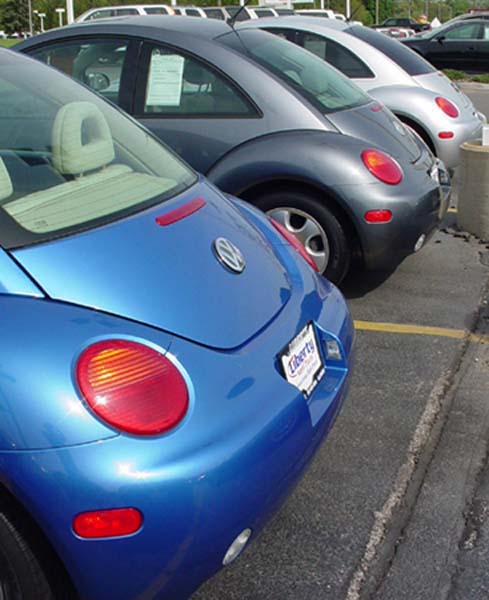



Nick DiSpoldo, Small Press Review (on “Children, Churches and Daddies,” April 1997)
Kuypers is the widely-published poet of particular perspectives and not a little existential rage, but she does not impose her personal or artistic agenda on her magazine. CC+D is a provocative potpourri of news stories, poetry, humor, art and the “dirty underwear” of politics.
One piece in this issue is “Crazy,” an interview Kuypers conducted with “Madeline,” a murderess who was found insane, and is confined to West Virginia’s Arronsville Correctional Center. Madeline, whose elevator definitely doesn’t go to the top, killed her boyfriend during sex with an ice pick and a chef’s knife, far surpassing the butchery of Elena Bobbitt. Madeline, herself covered with blood, sat beside her lover’s remains for three days, talking to herself, and that is how the police found her. For effect, Kuypers publishes Madeline’s monologue in different-sized type, and the result is something between a sense of Dali’s surrealism and Kafka-like craziness.
Debra Purdy Kong, writer, British Columbia, Canada
I like the magazine a lot. I like the spacious lay-out and the different coloured pages and the variety of writer’s styles. Too many literary magazines read as if everyone graduated from the same course. We need to collect more voices like these and send them everywhere.
Ed Hamilton, writer
#85 (of Children, Churches and Daddies) turned out well. I really enjoyed the humor section, especially the test score answers. And, the cup-holder story is hilarious. I’m not a big fan of poetry - since much of it is so hard to decipher - but I was impressed by the work here, which tends toward the straightforward and unpretentious.
As for the fiction, the piece by Anderson is quite perceptive: I liked the way the self-deluding situation of the character is gradually, subtly revealed. (Kuypers’) story is good too: the way it switches narrative perspective via the letter device is a nice touch.
Children, Churches and Daddies.
It speaks for itself.
Write to Scars Publications to submit poetry, prose and artwork to Children, Churches and Daddies literary magazine, or to inquire about having your own chapbook, and maybe a few reviews like these.
Jim Maddocks, GLASGOW, via the Internet
I’ll be totally honest, of the material in Issue (either 83 or 86 of Children, Churches and Daddies) the only ones I really took to were Kuypers’. TRYING was so simple but most truths are, aren’t they?
what is veganism?
A vegan (VEE-gun) is someone who does not consume any animal products. While vegetarians avoid flesh foods, vegans don’t consume dairy or egg products, as well as animal products in clothing and other sources.
why veganism?
This cruelty-free lifestyle provides many benefits, to animals, the environment and to ourselves. The meat and dairy industry abuses billions of animals. Animal agriculture takes an enormous toll on the land. Consumtion of animal products has been linked to heart disease, colon and breast cancer, osteoporosis, diabetes and a host of other conditions.
so what is vegan action?
We can succeed in shifting agriculture away from factory farming, saving millions, or even billions of chickens, cows, pigs, sheep turkeys and other animals from cruelty.
We can free up land to restore to wilderness, pollute less water and air, reduce topsoil reosion, and prevent desertification.
We can improve the health and happiness of millions by preventing numerous occurrences od breast and prostate cancer, osteoporosis, and heart attacks, among other major health problems.
A vegan, cruelty-free lifestyle may be the most important step a person can take towards creatin a more just and compassionate society. Contact us for membership information, t-shirt sales or donations.
vegan action
po box 4353, berkeley, ca 94707-0353
510/704-4444
C Ra McGuirt, Editor, The Penny Dreadful Review (on Children, Churches and Daddies)
cc&d is obviously a labor of love ... I just have to smile when I go through it. (Janet Kuypers) uses her space and her poets to best effect, and the illos attest to her skill as a graphic artist.
I really like (“Writing Your Name”). It’s one of those kind of things where your eye isn’t exactly pulled along, but falls effortlessly down the poem.
I liked “knowledge” for its mix of disgust and acceptance. Janet Kuypers does good little movies, by which I mean her stuff provokes moving imagery for me. Color, no dialogue; the voice of the poem is the narrator over the film.
Children, Churches and Daddies no longer distributes free contributor’s copies of issues. In order to receive issues of Children, Churches and Daddies, contact Janet Kuypers at the cc&d e-mail addres. Free electronic subscriptions are available via email. All you need to do is email ccandd@scars.tv... and ask to be added to the free cc+d electronic subscription mailing list. And you can still see issues every month at the Children, Churches and Daddies website, located at http://scars.tv
Mark Blickley, writer
The precursor to the magazine title (Children, Churches and Daddies) is very moving. “Scars” is also an excellent prose poem. I never really thought about scars as being a form of nostalgia. But in the poem it also represents courage and warmth. I look forward to finishing her book.
MIT Vegetarian Support Group (VSG)
functions:
* To show the MIT Food Service that there is a large community of vegetarians at MIT (and other health-conscious people) whom they are alienating with current menus, and to give positive suggestions for change.
* To exchange recipes and names of Boston area veg restaurants
* To provide a resource to people seeking communal vegetarian cooking
* To provide an option for vegetarian freshmen
We also have a discussion group for all issues related to vegetarianism, which currently has about 150 members, many of whom are outside the Boston area. The group is focusing more toward outreach and evolving from what it has been in years past. We welcome new members, as well as the opportunity to inform people about the benefits of vegetarianism, to our health, the environment, animal welfare, and a variety of other issues.
Gary, Editor, The Road Out of Town (on the Children, Churches and Daddies Web Site)
I just checked out the site. It looks great.
Dusty Dog Reviews: These poems document a very complicated internal response to the feminine side of social existence. And as the book proceeds the poems become increasingly psychologically complex and, ultimately, fascinating and genuinely rewarding.
John Sweet, writer (on chapbook designs)
Visuals were awesome. They’ve got a nice enigmatic quality to them. Front cover reminds me of the Roman sculptures of angels from way back when. Loved the staggered tire lettering, too. Way cool.
(on “Hope Chest in the Attic”)
Some excellent writing in “Hope Chest in the Attic.” I thought “Children, Churches and Daddies” and “The Room of the Rape” were particularly powerful pieces.
Dusty Dog Reviews: She opens with a poem of her own devising, which has that wintry atmosphere demonstrated in the movie version of Boris Pasternak’s Doctor Zhivago. The atmosphere of wintry white and cold, gloriously murderous cold, stark raging cold, numbing and brutalizing cold, appears almost as a character who announces to his audience, “Wisdom occurs only after a laboriously magnificent disappointment.” Alas, that our Dusty Dog for mat cannot do justice to Ms. Kuypers’ very personal layering of her poem across the page.
Cheryl Townsend, Editor, Impetus (on Children, Churches and Daddies)
The new cc&d looks absolutely amazing. It’s a wonderful lay-out, looks really professional - all you need is the glossy pages. Truly impressive AND the calendar, too. Can’t wait to actually start reading all the stuff inside.. Wanted to just say, it looks good so far!!!
Fithian Press, Santa Barbara, CA
Indeed, there’s a healthy balance here between wit and dark vision, romance and reality, just as there’s a good balance between words and graphics. The work shows brave self-exploration, and serves as a reminder of mortality and the fragile beauty of friendship.
Mark Blickley, writer
The precursor to the magazine title (Children, Churches and Daddies) is very moving. “Scars” is also an excellent prose poem. I never really thought about scars as being a form of nostalgia. But in the poem it also represents courage and warmth. I look forward to finishing her book.
You Have to be Published to be Appreciated.
Do you want to be heard? Contact Children, Churches and Daddies about book or chapbook publishing. These reviews can be yours. Scars Publications, attention J. Kuypers. We’re only an e-mail away. Write to us.
Brian B. Braddock, Writer (on 1996 Children, Churches and Daddies)
I passed on a copy to my brother who is the director of the St. Camillus AIDS programs. We found (Children, Churches and Daddies’) obvious dedication along this line admirable.
The Center for Renewable Energy and Sustainable Technology
The Solar Energy Research & Education Foundation (SEREF), a non-profit organization based in Washington, D.C., established on Earth Day 1993 the Center for Renewable Energy and Sustainable Technology (CREST) as its central project. CREST’s three principal projects are to provide:
* on-site training and education workshops on the sustainable development interconnections of energy, economics and environment;
* on-line distance learning/training resources on CREST’s SOLSTICE computer, available from 144 countries through email and the Internet;
* on-disc training and educational resources through the use of interactive multimedia applications on CD-ROM computer discs - showcasing current achievements and future opportunities in sustainable energy development.
The CREST staff also does “on the road” presentations, demonstrations, and workshops showcasing its activities and available resources.
For More Information Please Contact: Deborah Anderson
dja@crest.org or (202) 289-0061
Brian B. Braddock, WrBrian B. Braddock, Writer (on 1996 Children, Churches and Daddies)
Brian B. Braddock, WrI passed on a copy to my brother who is the director of the St. Camillus AIDS programs. We found (Children, Churches and Daddies’) obvious dedication along this line admirable.
Dorrance Publishing Co., Pittsburgh, PA
“Hope Chest in the Attic” captures the complexity of human nature and reveals startling yet profound discernments about the travesties that surge through the course of life. This collection of poetry, prose and artwork reflects sensitivity toward feminist issues concerning abuse, sexism and equality. It also probes the emotional torrent that people may experience as a reaction to the delicate topics of death, love and family.
“Chain Smoking” depicts the emotional distress that afflicted a friend while he struggled to clarify his sexual ambiguity. Not only does this thought-provoking profile address the plight that homosexuals face in a homophobic society, it also characterizes the essence of friendship. “The room of the rape” is a passionate representation of the suffering rape victims experience. Vivid descriptions, rich symbolism, and candid expressions paint a shocking portrait of victory over the gripping fear that consumes the soul after a painful exploitation.
want a review like this? contact scars about getting your own book published.
Paul Weinman, Writer (on 1996 Children, Churches and Daddies)
Wonderful new direction (Children, Churches and Daddies has) taken - great articles, etc. (especially those on AIDS). Great stories - all sorts of hot info!

The magazine Children Churches and Daddies is Copyright © 1993 through 2006 Scars Publications and Design. The rights of the individual pieces remain with the authors. No material may be reprinted without express permission from the author.

Okay, nilla wafer. Listen up and listen good. How to save your life. Submit, or I’ll have to kill you.
Okay, it’s this simple: send me published or unpublished poetry, prose or art work (do not send originals), along with a bio, to us - then sit around and wait... Pretty soon you’ll hear from the happy people at cc&d that says (a) Your work sucks, or (b) This is fancy crap, and we’re gonna print it. It’s that simple!
Okay, butt-munch. Tough guy. This is how to win the editors over.
Hope Chest in the Attic is a 200 page, perfect-bound book of 13 years of poetry, prose and art by Janet Kuypers. It’s a really classy thing, if you know what I mean. We also have a few extra sopies of the 1999 book “Rinse and Repeat”, the 2001 book “Survive and Thrive”, the 2001 books “Torture and Triumph” and “(no so) Warm and Fuzzy”,which all have issues of cc&d crammed into one book. And you can have either one of these things at just five bucks a pop if you just contact us and tell us you saw this ad space. It’s an offer you can’t refuse...
Carlton Press, New York, NY: HOPE CHEST IN THE ATTIC is a collection of well-fashioned, often elegant poems and short prose that deals in many instances, with the most mysterious and awesome of human experiences: love... Janet Kuypers draws from a vast range of experiences and transforms thoughts into lyrical and succinct verse... Recommended as poetic fare that will titillate the palate in its imagery and imaginative creations.
Mark Blickley, writer: The precursor to the magazine title (Children, Churches and Daddies) is very moving. “Scars” is also an excellent prose poem. I never really thought about scars as being a form of nostalgia. But in the poem it also represents courage and warmth. I look forward to finishing the book.
You Have to be Published to be Appreciated.
Do you want to be heard? Contact Children, Churches and Daddies about book and chapbook publishing. These reviews can be yours. Scars Publications, attention J. Kuypers - you can write for yourself or you can write for an audience. It’s your call...

Dorrance Publishing Co., Pittsburgh, PA: “Hope Chest in the Attic” captures the complexity of human nature and reveals startling yet profound discernments about the travesties that surge through the course of life. This collection of poetry, prose and artwork reflects sensitivity toward feminist issues concerning abuse, sexism and equality. It also probes the emotional torrent that people may experience as a reaction to the delicate topics of death, love and family. “Chain Smoking” depicts the emotional distress that afflicted a friend while he struggled to clarify his sexual ambiguity. Not only does this thought-provoking profile address the plight that homosexuals face in a homophobic society, it also characterizes the essence of friendship. “The room of the rape” is a passionate representation of the suffering rape victims experience. Vivid descriptions, rich symbolism, and candid expressions paint a shocking portrait of victory over the gripping fear that consumes the soul after a painful exploitation.
Dusty Dog Reviews, CA (on knife): These poems document a very complicated internal response to the feminine side of social existence. And as the book proceeds the poems become increasingly psychologically complex and, ultimately, fascinating and genuinely rewarding.
Children, Churches and Daddies. It speaks for itself.
Dusty Dog Reviews (on Without You): She open with a poem of her own devising, which has that wintry atmosphere demonstrated in the movie version of Boris Pasternak’s Doctor Zhivago. The atmosphere of wintry white and cold, gloriously murderous cold, stark raging cold, numbing and brutalizing cold, appears almost as a character who announces to his audience, “Wisdom occurs only after a laboriously magnificent disappointment.” Alas, that our Dusty Dog for mat cannot do justice to Ms. Kuypers’ very personal layering of her poem across the page.
Children, Churches and Daddies. It speaks for itself.
Debra Purdy Kong, writer, British Columbia, Canada (on Children, Churches and Daddies): I like the magazine a lot. I like the spacious lay-out and the different coloured pages and the variety of writer’s styles. Too many literary magazines read as if everyone graduated from the same course. We need to collect more voices like these and send them everywhere.
Fithian Press, Santa Barbara, CA: Indeed, there’s a healthy balance here between wit and dark vision, romance and reality, just as there’s a good balance between words and graphics. The work shows brave self-exploration, and serves as a reminder of mortality and the fragile beauty of friendship.
Children, Churches and Daddies
the unreligious, non-family oriented literary and art magazine
Scars Publications and Design
ccandd96@scars.tv
http://scars.tv
Publishers/Designers Of
Children, Churches and Daddies magazine
cc+d Ezines
The Burning mini poem books
God Eyes mini poem books
The Poetry Wall Calendar
The Poetry Box
The Poetry Sampler
Mom’s Favorite Vase Newsletters
Reverberate Music Magazine
Down In The Dirt magazine
Freedom and Strength Press forum
plus assorted chapbooks and books
music, poery compact discs
live performances of songs and readings
Sponsors Of
past editions:
Poetry Chapbook Contest, Poetry Book Contest
Prose Chapbook Contest, Prose Book Contest
Poetry Calendar Contest
current editions:
Editor’s Choice Award (writing and web sites)
Collection Volumes
Children, Churches and Daddies (founded 1993)
has been written and researched by political groups and writers from the United States, Canada, England, India, Italy, Malta, Norway and Turkey.
Regular features provide coverage of environmental, political and social issues (via news and philosophy) as well as fiction and poetry,
and act as an information and education source. Children, Churches and Daddies is the leading magazine for this combination of information,
education and entertainment.
Children, Churches and Daddies (ISSN 1068-5154) is published quarterly by Scars Publications and Design. Contact us via e-mail (ccandd96@scars.tv) for subscription rates
or prices for annual collection books.
To contributors:
No racist, sexist or blatantly homophobic material. No originals; if mailed, include SASE & bio.
Work sent on disks or through e-mail preferred. Previously published work accepted. Authors always retain rights to their own work. All magazine rights reserved. Reproduction of
Children, Churches and Daddies without publisher permission is forbidden.
Children, Churches and Daddies copyright Copyright © 1993 through 2006 Scars Publications and Design, Children, Churches and Daddies, Janet Kuypers. All rights remain with the authors of the individual
pieces. No material may be reprinted without express permission.
Internet ISSN 1555-1555

In This Issue...The Boss Lady’s Editorial with “Choose Your Theory: Science or God”, then eye on the sky with NASA Images that Suggest Water Still Flows in Brief Spurts on Mars.
Art by Eric Bonholtzer, then
Poetry by Mel Waldman, art by Cheryl Townsend, poetry by Je’free, art by Edward Michael O’durr Supranowicz, and Adriana DeCastro, poetry by Ed Coet, art by David Matson, poetry by Jim Greenwald, art by Peter Schwartz, poetry by Christian Ward, and Ron Arnold, and Stanley M Noah, and Kelly Ann Malone, and Bill Dorris, and Luis Cuauhtemoc Berriozabal.
|

art by Eric Bonholtzer
the boss lady’s editorial |
Choose Your Theory:
Janet Kuypers, 11/28/06 |
 This editorial is licensed under a Creative Commons Attribution-NoDerivs 2.5 License. |

|

Janet Kuypers
|
eye on the sky |

12.06.06 NASA Images Suggest Water Still Flows in Brief Spurts on Mars
NASA photographs have revealed bright new deposits seen in two gullies on Mars that suggest water carried sediment through them sometime during the past seven years.
|
poetry
the passionate stuff
SCALESMel Waldman
How do I balance Father’s madness with Mother’s love?
What are the rights of a terrorist? (How do I atone for the sins of
Father bestowed upon me his dark raw rage, passing it through my
Mother, always the optimist, fed me love and faith and visions of a
The universe spits rage at us and tips the scale of love and hate. How do we
The galaxy launches good and evil at us, filling our human bodies with
The cosmos rushes forth with nature’s truth. But humans run with So many scales to balance...
Our president wants to strip terrorist suspects of habeas corpus, How do we balance the Scale of Justice?
Shall we forget the Detainee Treatment
Shall we permit cruel and inhuman
Shall we violate the Geneva Conventions
If we do not bar cruel and inhuman treatment...
The landscape of our beautiful country is
In the beginning, Father accused me of minor
I shook in his presence. I wanted to kill him for
I never confessed. And the torture never ceased. Now, I sit in my cell and study the darkness.
So many scales to balance...within and out
|

Tits and Grass, art by Cheryl Townsend
Random Observations
Je’free |

Deceit, art by Edward Michael O’durr Supranowicz
PRIME NUMBERS,Richard Fein
they tease the obsessive in our natures.
|

Paradise, art by Adriana DeCastro
COMFORTEd Coet
When I first met you I couldn’t leave you,
Without you I was nothing.
If I wakened in the night, regardless of reason,
I recall combat in the sands of Desert Storm.
I see you in our children.
We grew old together.
In the hospital when I was gravelly ill -
God made me say good-bye.
|

From Nature Images, art by David Matson
|
Memories of a Catholic school education, the Gestapo of that religion ‘Dominican Nuns’ taught well, but oh so deadly.
penguinsjim greenwald
I remember my
Dressed in formal wear,
Attention getters—embedded
Baseballs loss—none could throw
Education by pain—we did learn.
Boot camp was a breeze—being
|

Organics, art by Peter Schwartz
Information on the Artist Peter SchwartzAfter years of writing and painting, Peter Schwartz has moved to another medium: photography. In the past his work’s been featured in many prestigious print and online journals including: Existere, Failbetter, Hobart, International Poetry Review, Red Wheelbarrow, Reed, and Willard & Maple. Doing interviews, collaborating with other artists, and pushing the borders of creativity, his mission is to broaden the ways the world sees art. Visit his online gallery at: www.sitrahahra.com.
|
Red AngelsChristian Ward
She was the first person on our street
so she smashed it and displayed Nobody complained.
She was the first person on our street
controlled zombie. So she ground it up Nobody complained.
She was the first person on our street
the local magistrate smiled sheepishly Nobody complained.
She was the first person on our street
to spy on her and her three cats. Somebody had complained.
|
The Tipping PointRon Arnold
I tape a Wildflowers poster on the wall
When they step back from their creation,
Perhaps we could expect this after reaching
I look at the Wildflowers poster again
|

just another mythStanley M Noah
all greeks are not
as it only seems
in fact
on ancient sails
on the
unloading
unloading
about fallen
|




The Bridal ShowerKelly Ann Malone
As I wrote the name of the gift-giver on the back of a paper plate
The bride-to-be is savoring her interim glory
Undignified games produced intelligible banter
|




KilimanjaroBill Dorris
While eagles track the rising waves
One line in above poem
|

BURY MELuis Cuauhtemoc Berriozabal
Broadcast my name
I will bring you
It is rather
A better thing.
Make the world know
|

prose
the meat and poatoes stuff
AnthologyBrandon KinkadeI wish I was a roadie for Jim Morrison and The Doors, taught to bear a whale in my stomach, become a irresponsible drunken clown through late night drowns of Beam, candy amphetamines, and cologne soaked hash smoke. Become his cinematic Warhol porno star, poking holes through the ends of Styrofoam cups staring at the fat bottom girls as they cross. Instead, I’m silently stuck to act my dreams through masturbation in the comfort of my box. The world I spin in is a pen striped, grease stained homeless man’s box. I’m a fishing tank who waits patiently in Crown Hill cemetery for the ghosts to cross the lavender, echoing graves into the uncharted industrial smoke. Open your eyes and receive the think piece monologue entitled “The End.” As the temporary Florida migration of fossils leave through the back door, I sit open handed in the shallow side of the bar sipping the role as the sad clown.
It’s hard to court foreign models when you make a living as a rodeo clown. This is the last chapter of the book, “Twain’s anti-climatic let down in the end.” I rose up one morning to find two pigs with badges pushing orchestral tunes of the doorbell. The paper said they found weird Henry, head blowned, under the bridge in his boxers. As a child, we fantasied of Hollywood war and chased each other courageously across the neighborhood’s open Midwestern yards and through the high saluting garage doors. As a teen, I became a crazy glue wall lizard. An unholy son whose only hobby was smoking. As an adult, I poured tears like a faucet when they buried The King in his southern eternal box. Few years later, the myth whom said “We’re larger than Jesus.” fell upon his crucified clown only to leave me alone and uncharted with an L.A. woman to tie up the tangled blue loose ends.
A domino effect. We all tumble like lumber trees end over end chocking for sanctuary and breath over the dark cloud of Valhalla’s smoke. I wish I was a make believe friend who lived a luxurious life inside your Nike shoebox. Then you can pour me your secrets, tell me stories, and spend everlasting time clowning around like two children book lovers who met at chance when their paths finally crossed. What if George Bush was a tacky salesman who sold soap on a rope door to door? Then would you still pick up a machine gun and run to Iraq with the dancing clowns? Did I ever mention to you about the man who once tried to cross The Ohio River? His legs tired out and the catfish bed became his end. As I sleep restlessly inside my yellow heart shaped box, I feel the warm of the virgin Mary caressing me through the devil’s thick smoke.
In my box, I play the avent garde actor opposite the sad clown.
|

No One Sees, No One Knows art by Aaron Wilder
Out to LunchPat Dixon
How the hell can they enforce that? wondered Dr. William (“Hopalong”) Boyd, as he washed his hands and read the large-print sign glued to the mirror in front of him. He smiled to himself and glanced theatrically around the upper walls of the large men’s room to see if it had any surveillance camera. Nope. If the employees don’t WISH to wash their hands after every time they have a whiz—or any time, for that matter—nobody will know—or nobody but the individual employee involved—unless the ladies’ room is different, which is very probable—or unless there’s a surveillance camera hidden in back of this mirror.
|
(exerpts of)THE DRIVEKenneth DiMaggio
Ohh, just thank God you were able to fuck up when you did, kid, because the medicine cabinets in those raised ranch houses have more drugs in them then on the corners back in the ‘hood. And what’s worse, is that those legal middle class prescribed drugs, keep you working, and anything that keeps you together in order to do a pointless job to make somebody you will never see a filthy load of profit, is nothing less than evil in its more pure form. |


Debra Purdy Kong, writer, British Columbia, Canada I like the magazine a lot. I like the spacious lay-out and the different coloured pages and the variety of writer’s styles. Too many literary magazines read as if everyone graduated from the same course. We need to collect more voices like these and send them everywhere.
Children, Churches and Daddies. It speaks for itself. Write to Scars Publications to submit poetry, prose and artwork to Children, Churches and Daddies literary magazine, or to inquire about having your own chapbook, and maybe a few reviews like these.
what is veganism? A vegan (VEE-gun) is someone who does not consume any animal products. While vegetarians avoid flesh foods, vegans don’t consume dairy or egg products, as well as animal products in clothing and other sources. why veganism? This cruelty-free lifestyle provides many benefits, to animals, the environment and to ourselves. The meat and dairy industry abuses billions of animals. Animal agriculture takes an enormous toll on the land. Consumtion of animal products has been linked to heart disease, colon and breast cancer, osteoporosis, diabetes and a host of other conditions. so what is vegan action?
We can succeed in shifting agriculture away from factory farming, saving millions, or even billions of chickens, cows, pigs, sheep turkeys and other animals from cruelty. A vegan, cruelty-free lifestyle may be the most important step a person can take towards creatin a more just and compassionate society. Contact us for membership information, t-shirt sales or donations.
vegan action
Children, Churches and Daddies no longer distributes free contributor’s copies of issues. In order to receive issues of Children, Churches and Daddies, contact Janet Kuypers at the cc&d e-mail addres. Free electronic subscriptions are available via email. All you need to do is email ccandd@scars.tv... and ask to be added to the free cc+d electronic subscription mailing list. And you can still see issues every month at the Children, Churches and Daddies website, located at http://scars.tv
MIT Vegetarian Support Group (VSG)
functions: We also have a discussion group for all issues related to vegetarianism, which currently has about 150 members, many of whom are outside the Boston area. The group is focusing more toward outreach and evolving from what it has been in years past. We welcome new members, as well as the opportunity to inform people about the benefits of vegetarianism, to our health, the environment, animal welfare, and a variety of other issues.
Dusty Dog Reviews: These poems document a very complicated internal response to the feminine side of social existence. And as the book proceeds the poems become increasingly psychologically complex and, ultimately, fascinating and genuinely rewarding.
Dusty Dog Reviews: She opens with a poem of her own devising, which has that wintry atmosphere demonstrated in the movie version of Boris Pasternak’s Doctor Zhivago. The atmosphere of wintry white and cold, gloriously murderous cold, stark raging cold, numbing and brutalizing cold, appears almost as a character who announces to his audience, “Wisdom occurs only after a laboriously magnificent disappointment.” Alas, that our Dusty Dog for mat cannot do justice to Ms. Kuypers’ very personal layering of her poem across the page.
Fithian Press, Santa Barbara, CA Indeed, there’s a healthy balance here between wit and dark vision, romance and reality, just as there’s a good balance between words and graphics. The work shows brave self-exploration, and serves as a reminder of mortality and the fragile beauty of friendship.
Mark Blickley, writer You Have to be Published to be Appreciated. Do you want to be heard? Contact Children, Churches and Daddies about book or chapbook publishing. These reviews can be yours. Scars Publications, attention J. Kuypers. We’re only an e-mail away. Write to us.
The Center for Renewable Energy and Sustainable Technology The Solar Energy Research & Education Foundation (SEREF), a non-profit organization based in Washington, D.C., established on Earth Day 1993 the Center for Renewable Energy and Sustainable Technology (CREST) as its central project. CREST’s three principal projects are to provide: * on-site training and education workshops on the sustainable development interconnections of energy, economics and environment; * on-line distance learning/training resources on CREST’s SOLSTICE computer, available from 144 countries through email and the Internet; * on-disc training and educational resources through the use of interactive multimedia applications on CD-ROM computer discs - showcasing current achievements and future opportunities in sustainable energy development. The CREST staff also does “on the road” presentations, demonstrations, and workshops showcasing its activities and available resources. For More Information Please Contact: Deborah Anderson dja@crest.org or (202) 289-0061
Dorrance Publishing Co., Pittsburgh, PA want a review like this? contact scars about getting your own book published.

The magazine Children Churches and Daddies is Copyright © 1993 through 2006 Scars Publications and Design. The rights of the individual pieces remain with the authors. No material may be reprinted without express permission from the author.

Okay, nilla wafer. Listen up and listen good. How to save your life. Submit, or I’ll have to kill you.
Okay, butt-munch. Tough guy. This is how to win the editors over. Carlton Press, New York, NY: HOPE CHEST IN THE ATTIC is a collection of well-fashioned, often elegant poems and short prose that deals in many instances, with the most mysterious and awesome of human experiences: love... Janet Kuypers draws from a vast range of experiences and transforms thoughts into lyrical and succinct verse... Recommended as poetic fare that will titillate the palate in its imagery and imaginative creations. Mark Blickley, writer: The precursor to the magazine title (Children, Churches and Daddies) is very moving. “Scars” is also an excellent prose poem. I never really thought about scars as being a form of nostalgia. But in the poem it also represents courage and warmth. I look forward to finishing the book.
You Have to be Published to be Appreciated.
 Dorrance Publishing Co., Pittsburgh, PA: “Hope Chest in the Attic” captures the complexity of human nature and reveals startling yet profound discernments about the travesties that surge through the course of life. This collection of poetry, prose and artwork reflects sensitivity toward feminist issues concerning abuse, sexism and equality. It also probes the emotional torrent that people may experience as a reaction to the delicate topics of death, love and family. “Chain Smoking” depicts the emotional distress that afflicted a friend while he struggled to clarify his sexual ambiguity. Not only does this thought-provoking profile address the plight that homosexuals face in a homophobic society, it also characterizes the essence of friendship. “The room of the rape” is a passionate representation of the suffering rape victims experience. Vivid descriptions, rich symbolism, and candid expressions paint a shocking portrait of victory over the gripping fear that consumes the soul after a painful exploitation.
Dusty Dog Reviews (on Without You): She open with a poem of her own devising, which has that wintry atmosphere demonstrated in the movie version of Boris Pasternak’s Doctor Zhivago. The atmosphere of wintry white and cold, gloriously murderous cold, stark raging cold, numbing and brutalizing cold, appears almost as a character who announces to his audience, “Wisdom occurs only after a laboriously magnificent disappointment.” Alas, that our Dusty Dog for mat cannot do justice to Ms. Kuypers’ very personal layering of her poem across the page. Debra Purdy Kong, writer, British Columbia, Canada (on Children, Churches and Daddies): I like the magazine a lot. I like the spacious lay-out and the different coloured pages and the variety of writer’s styles. Too many literary magazines read as if everyone graduated from the same course. We need to collect more voices like these and send them everywhere.
Fithian Press, Santa Barbara, CA: Indeed, there’s a healthy balance here between wit and dark vision, romance and reality, just as there’s a good balance between words and graphics. The work shows brave self-exploration, and serves as a reminder of mortality and the fragile beauty of friendship.
|